26th October I have a very good friend here in Somerset West who I have known now for about 30 years. Chris Denny is the most generous person that I have ever met and out of the blue he invited me some weeks ago to join him on a tigerfishing trip to the Zambezi in Zambia at the end of October. I thought my days of tigerfishing were over so this invitation came as an exciting surprise to me.
On Thursday, 26th, Chris, his son-in-law Dwayne and I board an early morning Airlink flight to Johannesburg where we meet up with Dwayne’s friend, Danie, from Richards Bay. At 11am we all fly off northwards on another Airlink flight and after an hour and a half we descend into Livingstone, Zambia through some quite severe turbulence caused by the typical October Zambezi valley heat. Seated ahead of us are two bulky, muscular, young black men (Chris Gayle types) who are dressed in skimpy vests and sweating profusely – all brought about by the terrifying motions of the plane. When we finally touch down their relief overcomes them and they break into noisy applause – rather amusing how these macho he-men were reduced to gibbering wrecks.
Exiting the aircraft (and the BO), we are met by the blast furnace 39ºC air – enough to dispel any lingering memories of our cold Cape winter. Livingstone airport is clean and new and we quickly clear passport control. We are heading for Shackletons, a fishing lodge some 140Km west of Livingstone.
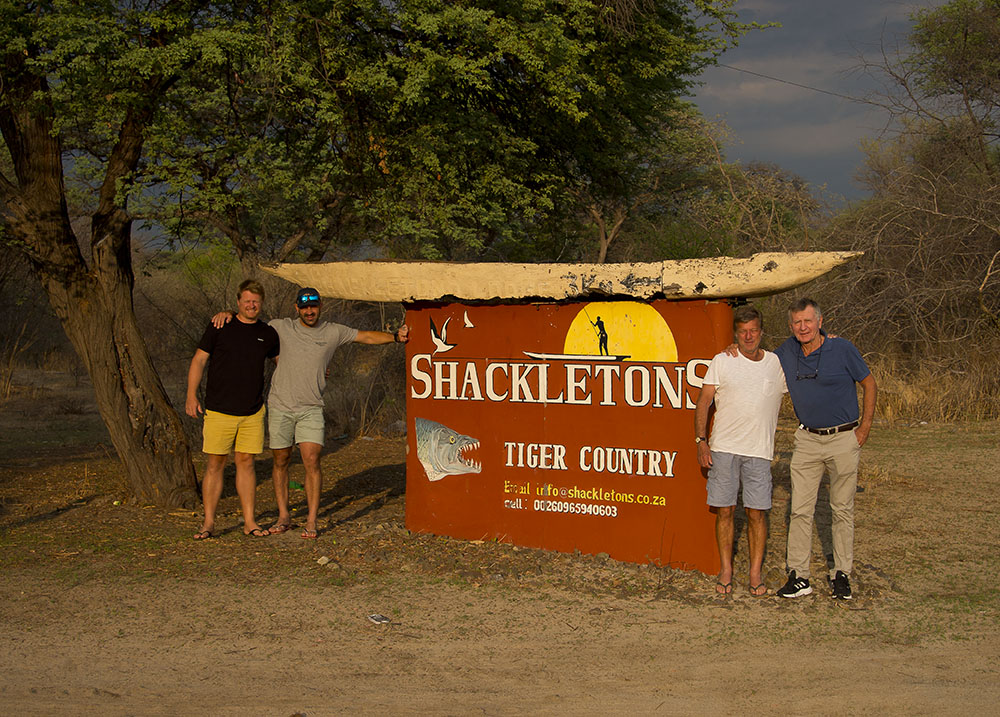
We are met by the lodge driver and head out west in a rather strange Toyota SUV, not sold back in SA and peculiar to Zambia. The tarred road as far as Kasungula is in fairly good condition but is choked with big trucks plying the route between Zambia and SA through Botswana. Thereafter the road quickly deteriorates into a potholed mess of semi tar and gravel and the trip takes us three hours to complete. Along the way we pass many sights so typical of Zambia.
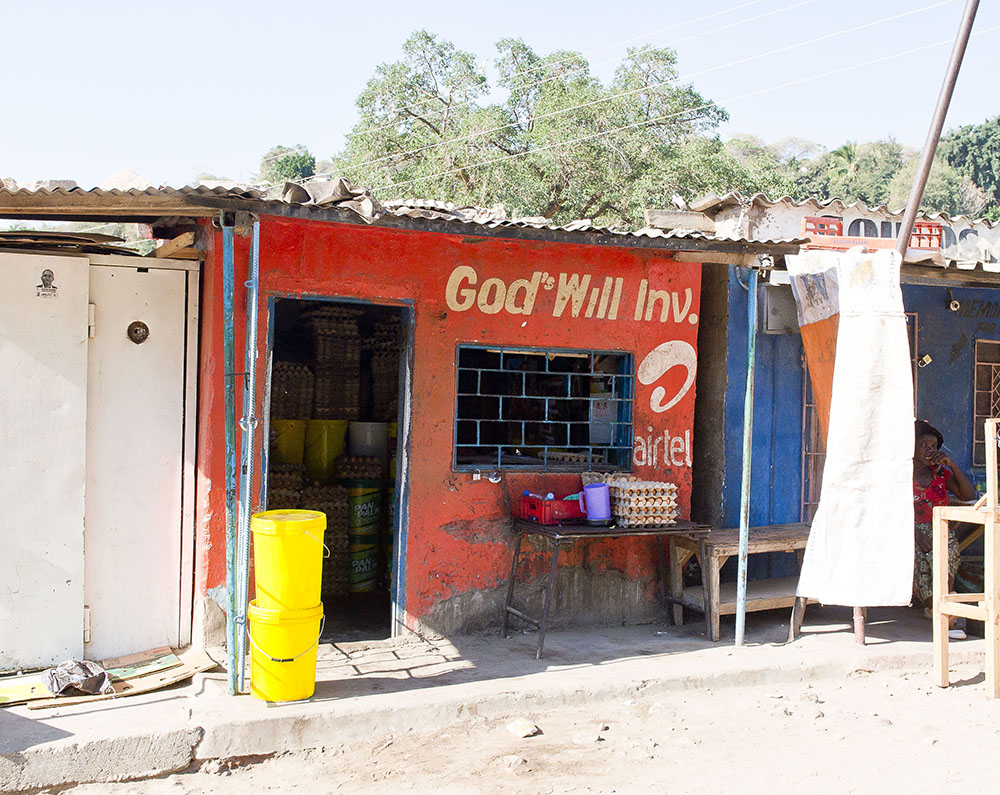
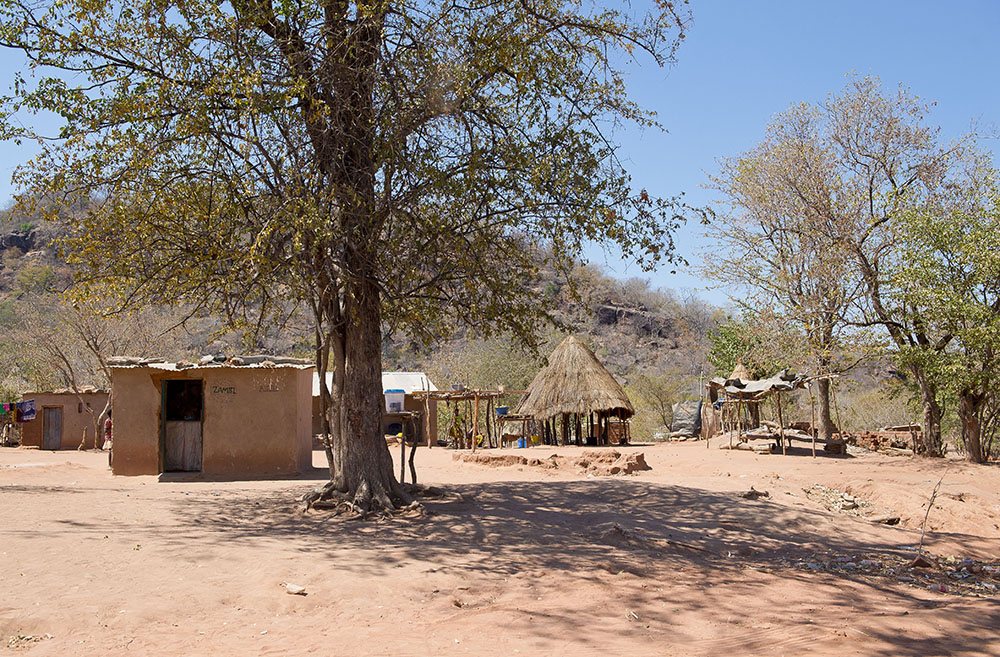
At Shackletons we are met by owner Howard Shackleton, a Zimbabwean who built the lodge over 20 years ago. We are quickly shown to our chalets, six of which are scattered about amongst riverside trees, bush and lawns.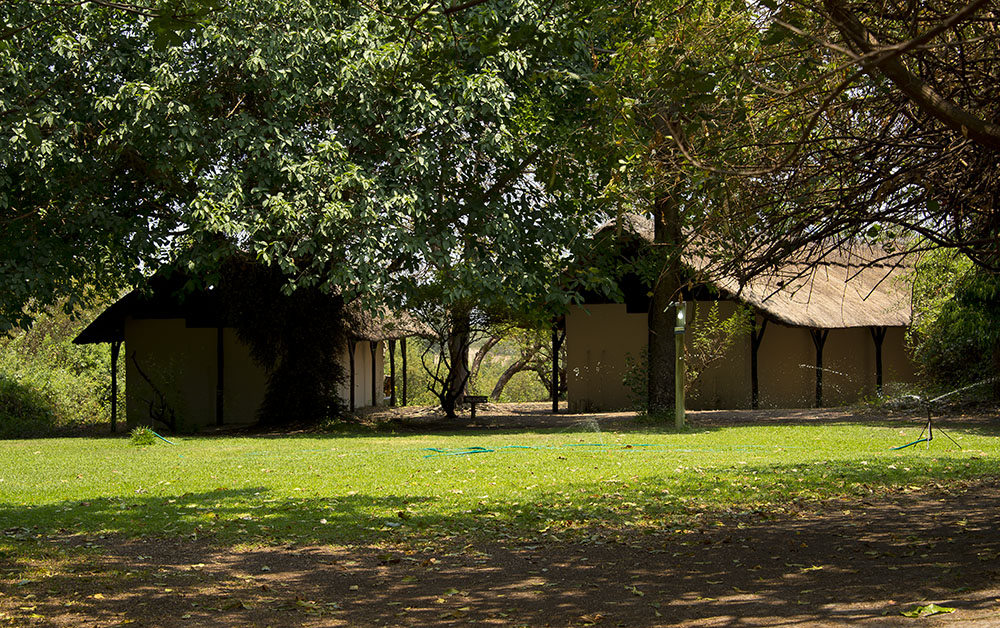
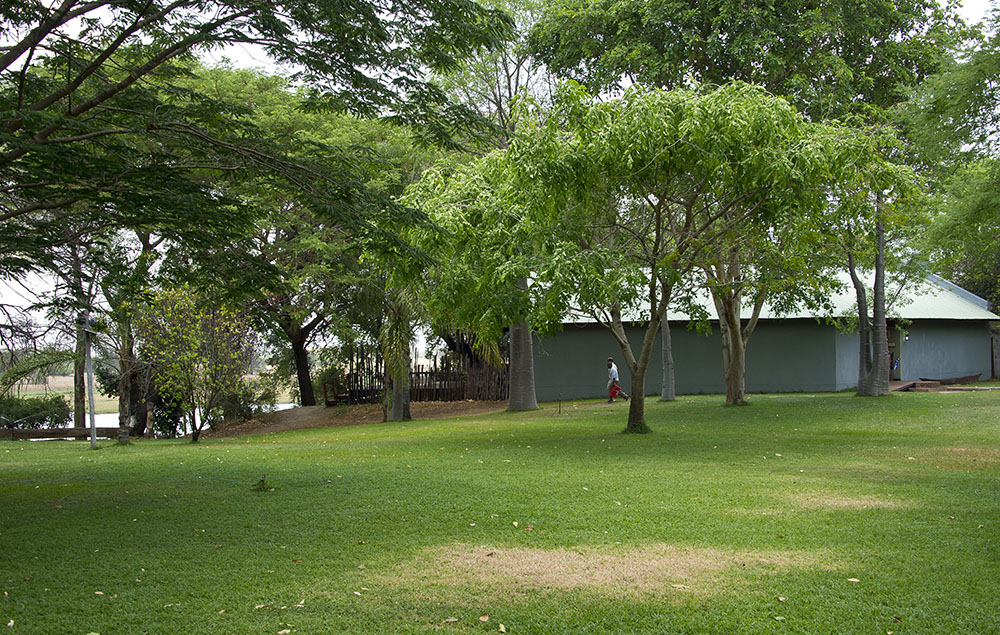
No time to mess around though and by 4.30pm we are on the boats heading out onto the main river.
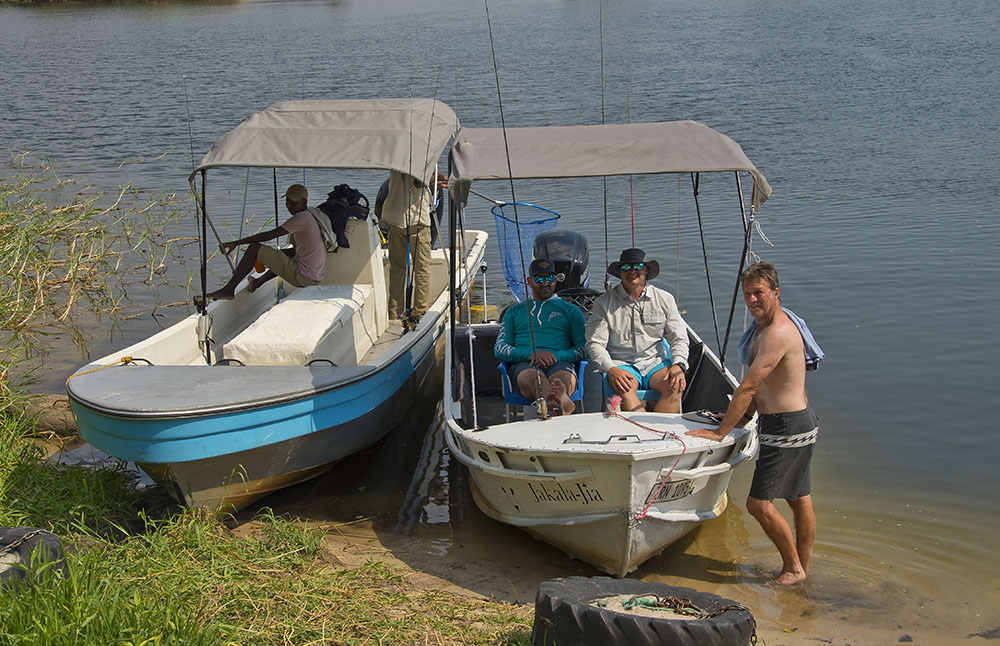
What joy it is to be back on the Zambezi which holds so many fond memories.

This stupendous river is, in October, at its lowest level and yet the volume of water still surging over its wide riverbed is so, so impressive. I doubt if all the SA rivers combined would come even close to matching that pouring down the Zambezi.
Shackletons is well known for its big tigerfish and, like all fishermen, we are full of anticipation and keyed up for the ‘big strike’. Chris and I are in one boat and the younger lads in another, both with a boatmen/gillie. We are fishing with live baits called ‘bulldogs’ – a small fish caught by the locals in their nets.
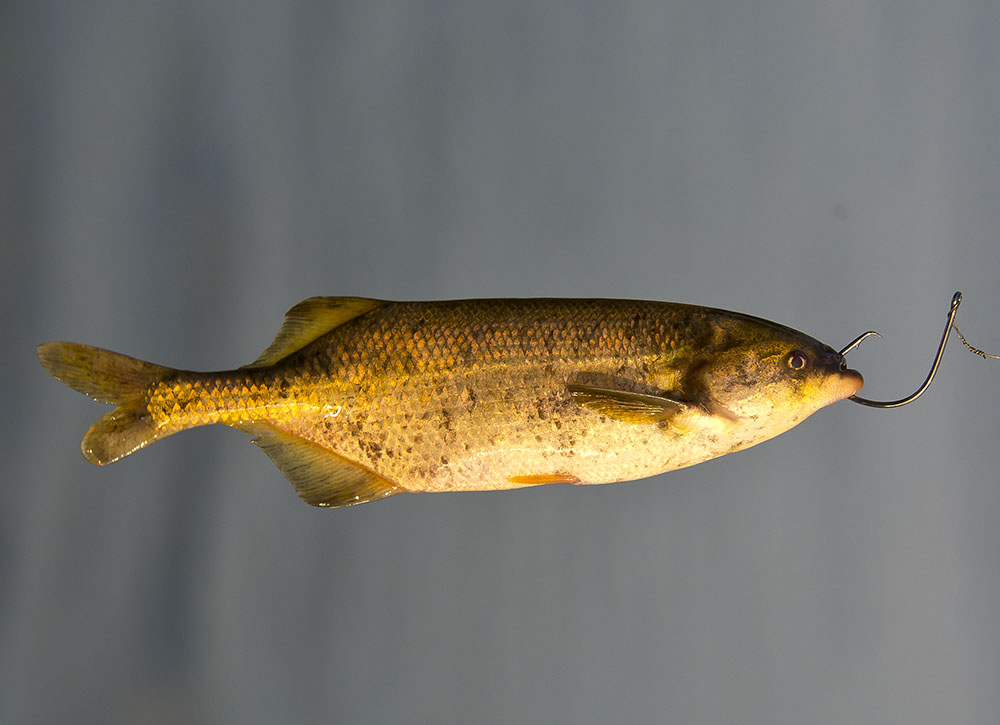
One casts out one’s bait and allows it and the boat to drift with the current. Chris’s scant store of patience is already being tested and this afternoon after only 10 minutes of quiet fishing there are already some murmurs. We return to the lodge at 6pm for a really good supper and we quickly learn that Shackleton food is just excellent.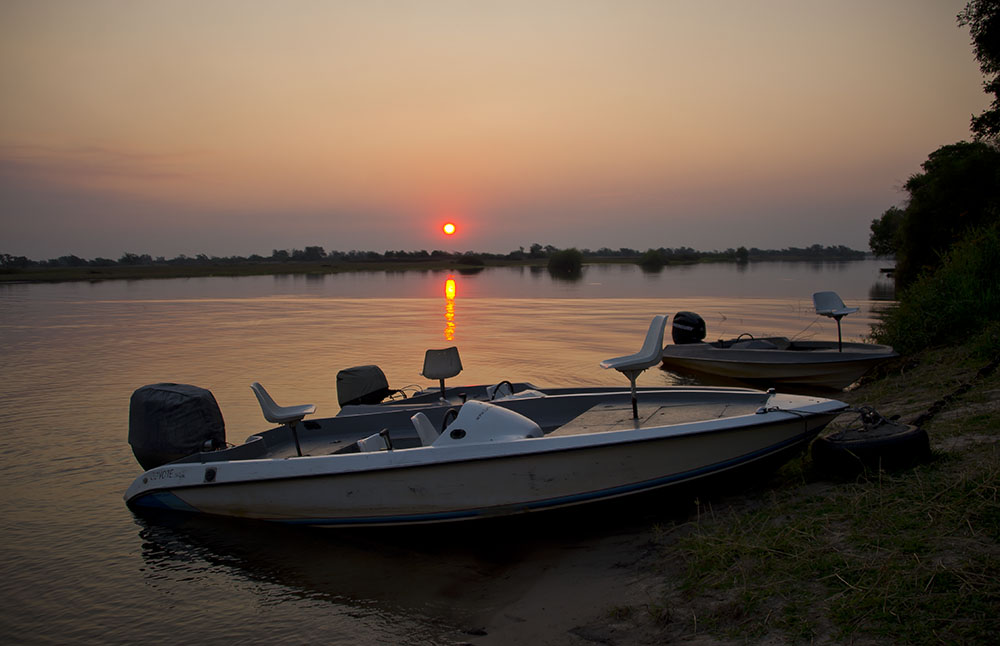
Friday, 27th
Raring to go, we have some cereal and coffee at 6am and then quickly leave camp in high anticipation.
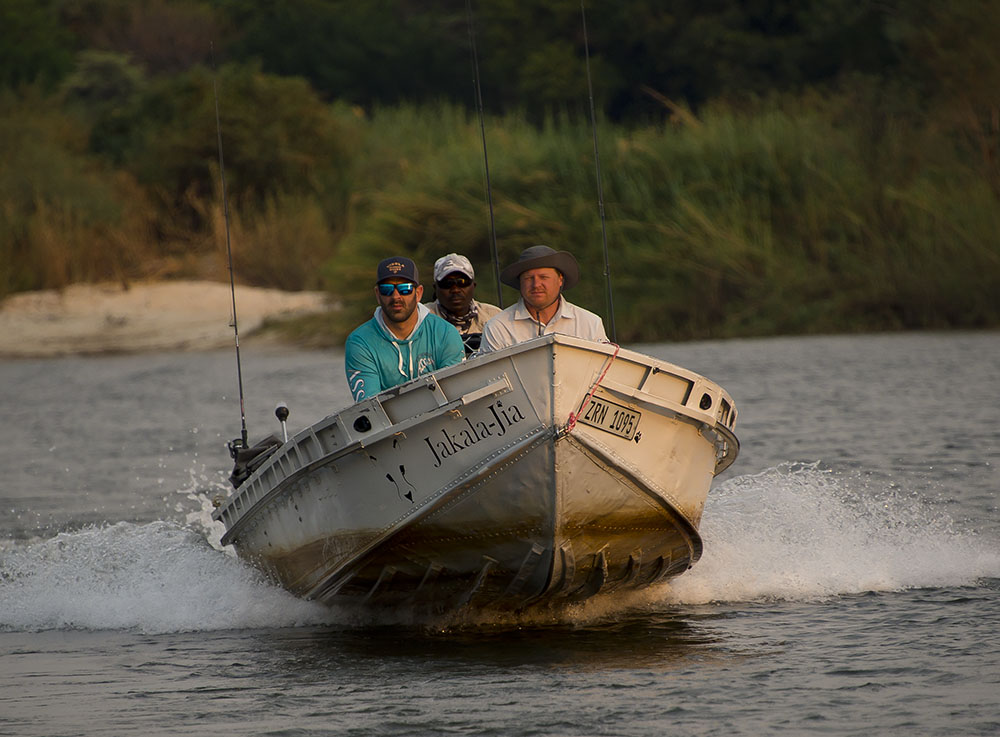
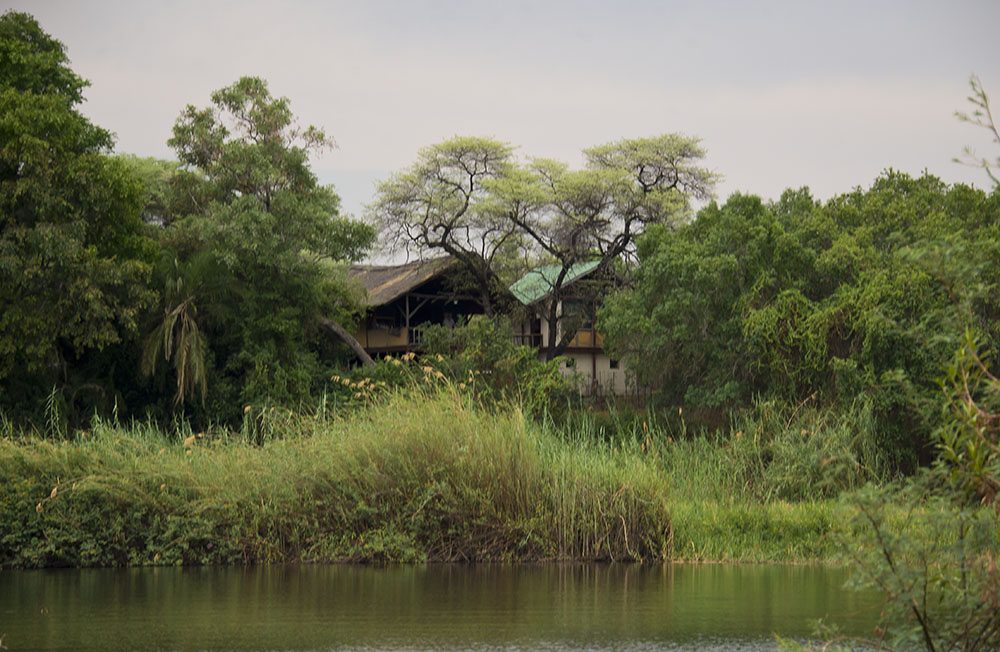
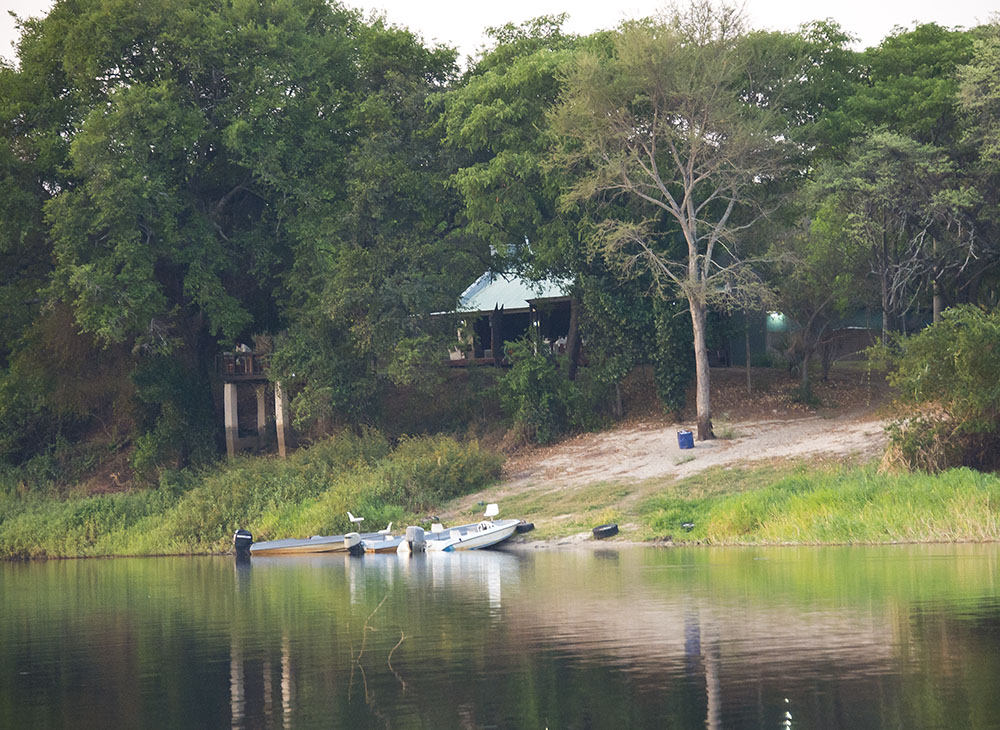
We head downstream 10-15kms and pass the village of Mwandi. Local river travel is largely done by “mokoro” – a boat fashioned from a tree trunk.
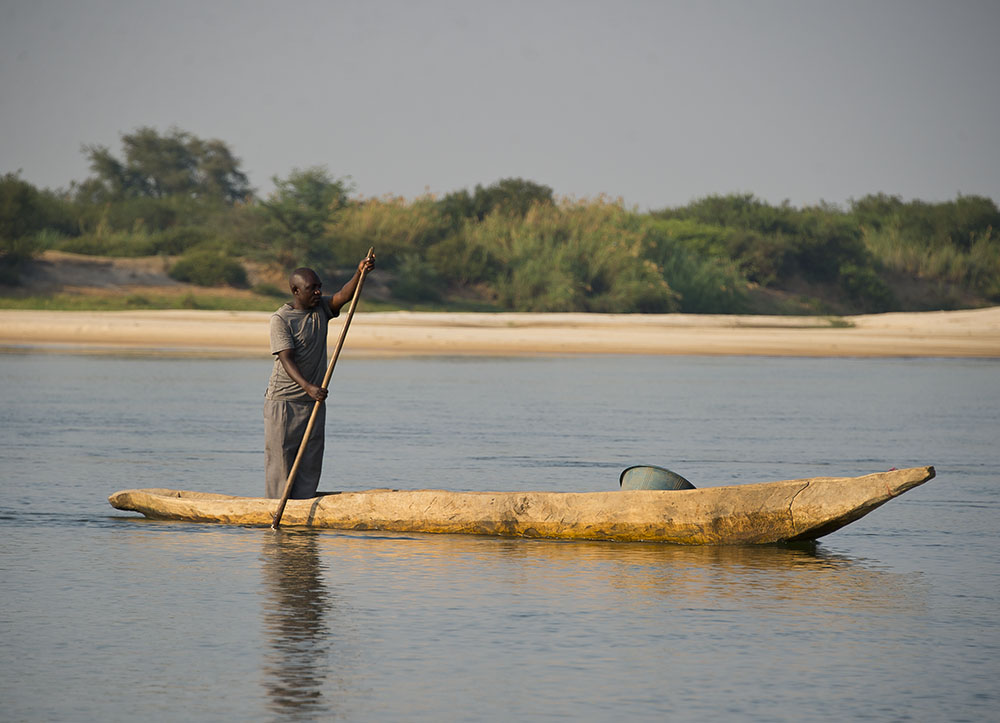
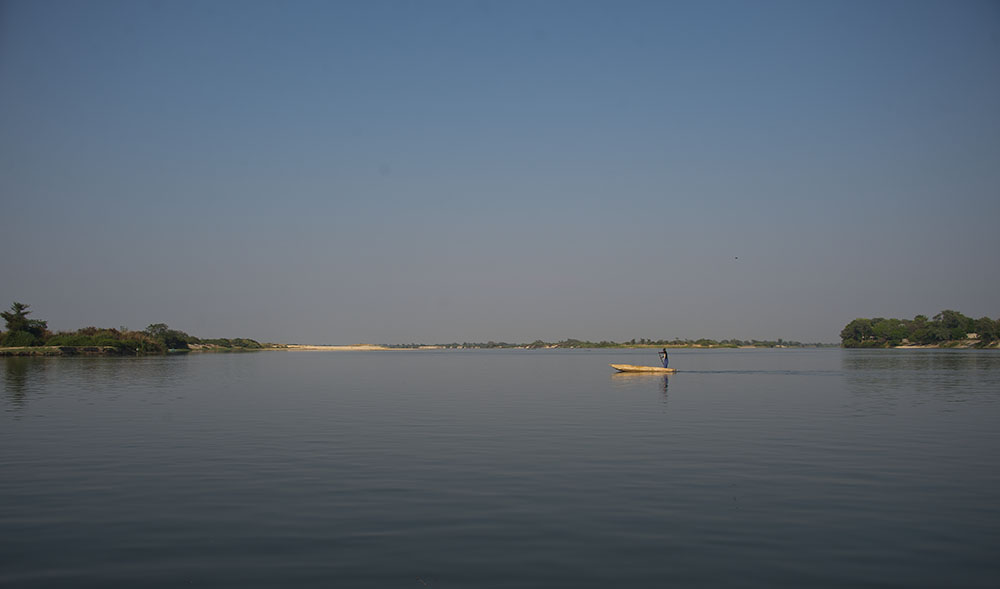
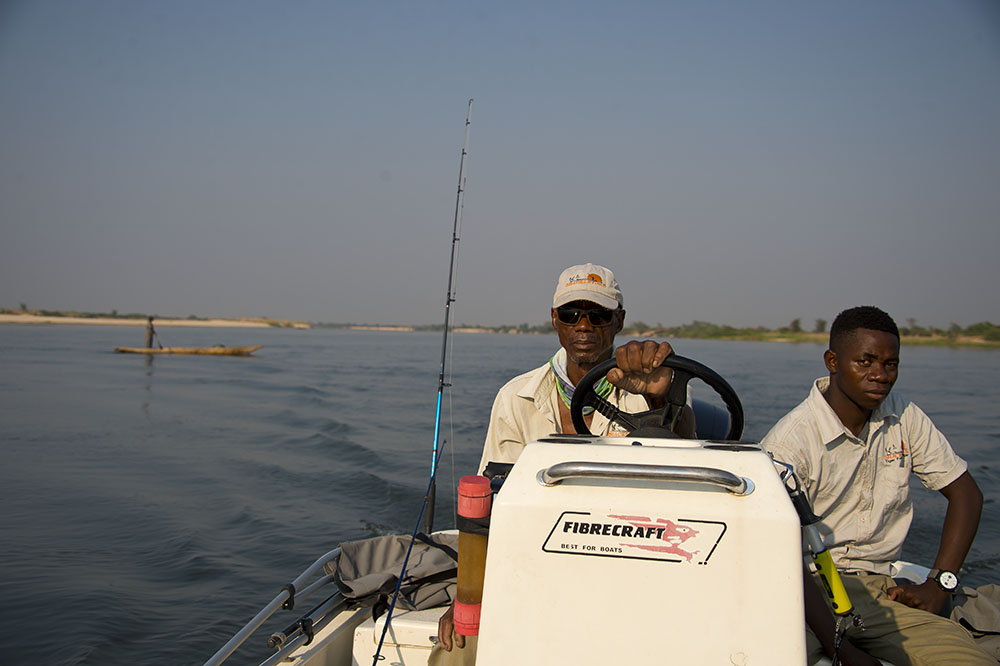
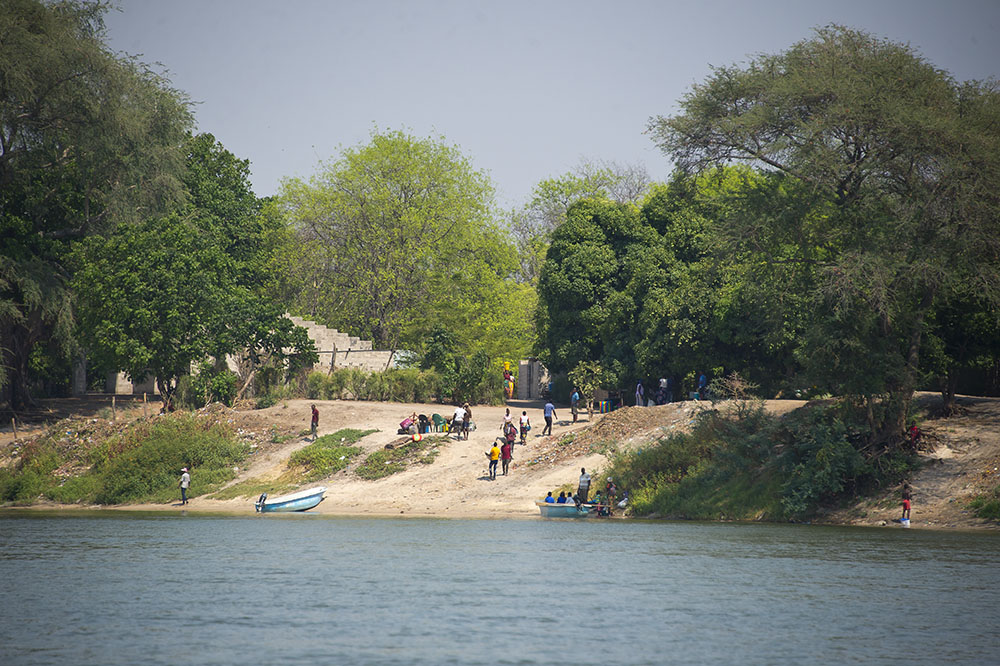
Despite us seeing the occasional crocodile on a far bank, it is remarkable that the locals pay so little heed to the dangers that they pose. Women collect water from the river, fishermen wade in and we even see children swimming. Remmy relates that he has lost two sisters to crocodiles and that a brother was also knocked out of his mokoro, never to be seen again. The locals seem amazingly philosophical about it all and just carry on with their everyday lives although Remmy assures us that “spells” do protect them.
We continue a couple of Km’s beyond the village and at last begin to encounter some big bites. I begin with a lovely 6Kg fish which is quickly weighed and returned to the water. No fish bites as violently as a tigerfish and our little daydreams are often shockingly interrupted by a screaming reel. Chris then surpasses me and after a good fight lands a 7kg fish.
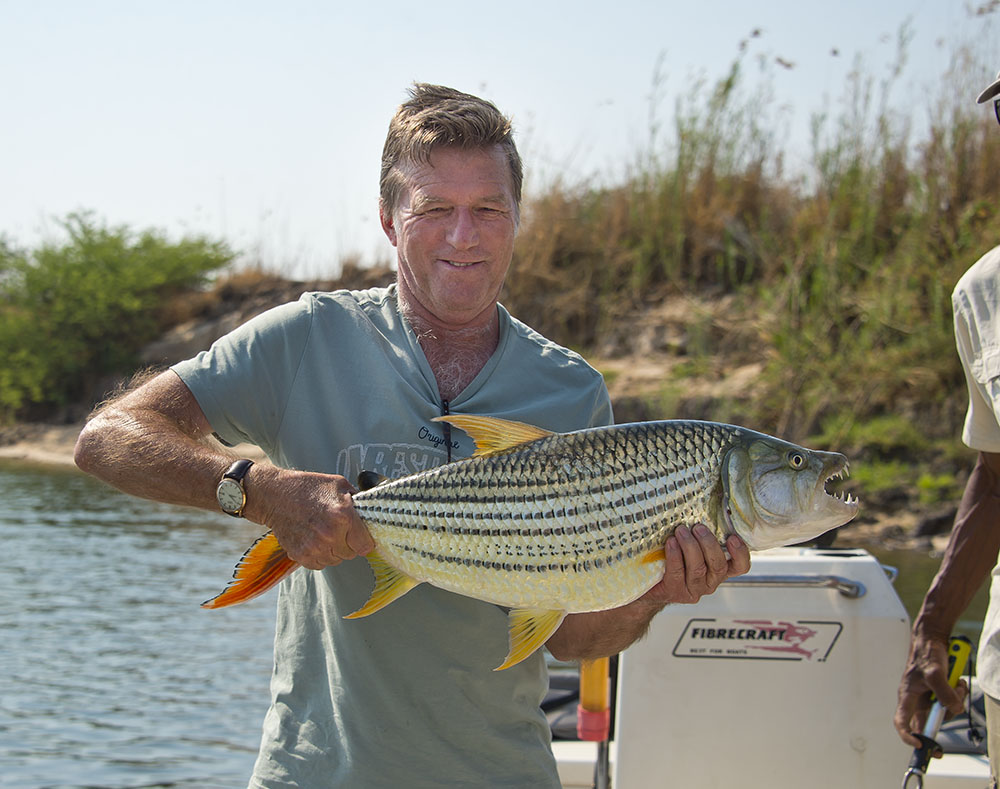
Tigerfish are difficult to land. Their hard mouths make it difficult to set a hook and often during the fight they leap clear of the water shaking their heads, thereby dislodging the hook. But both these two big tigerfish do not jump and Remmy explains that it is because they are large, fat bellied females. Younger fish and the males do the jumping.
Readers of my last blog from Kruger may remember that I became quite excited when I found eight Open-billed storks feeding in the Sabie River. Here on the Zambezi they are prolific and huge flocks are often to be seen.
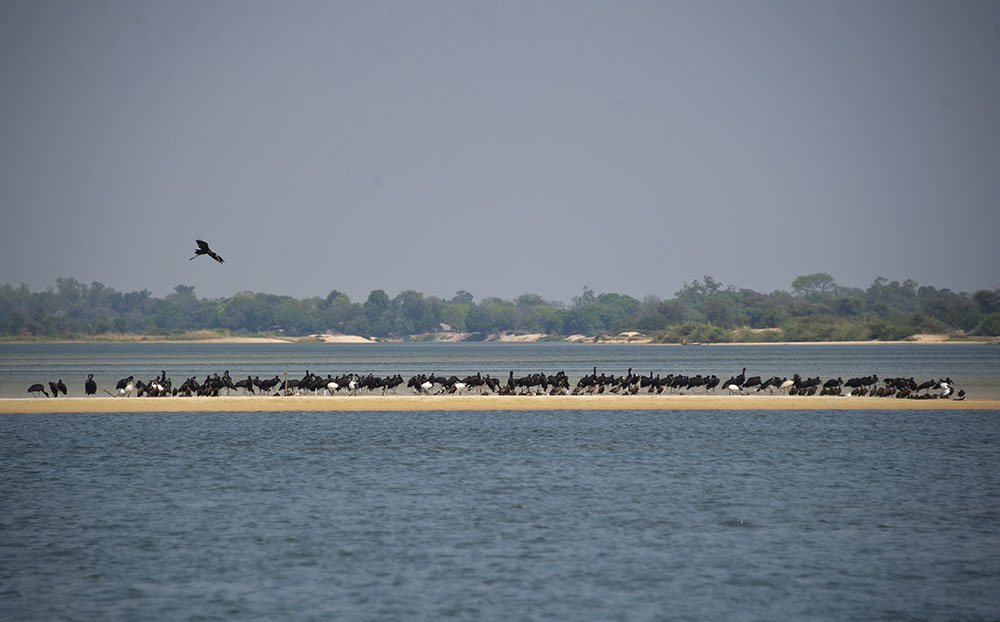
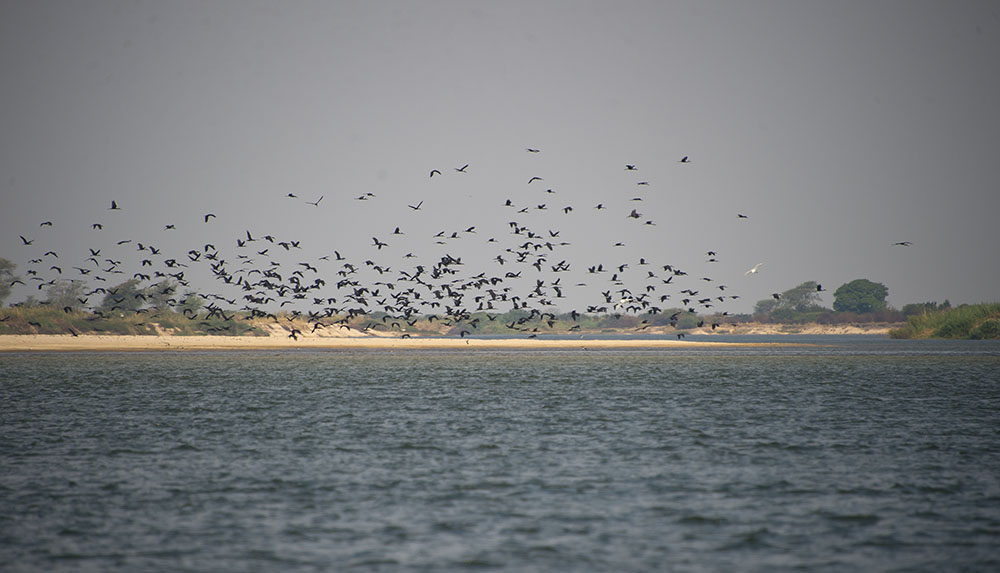
Something else is a feature here. At this very moment two African Skimmers are creating a sensation down at Lower Sabie whilst here they are everywhere.
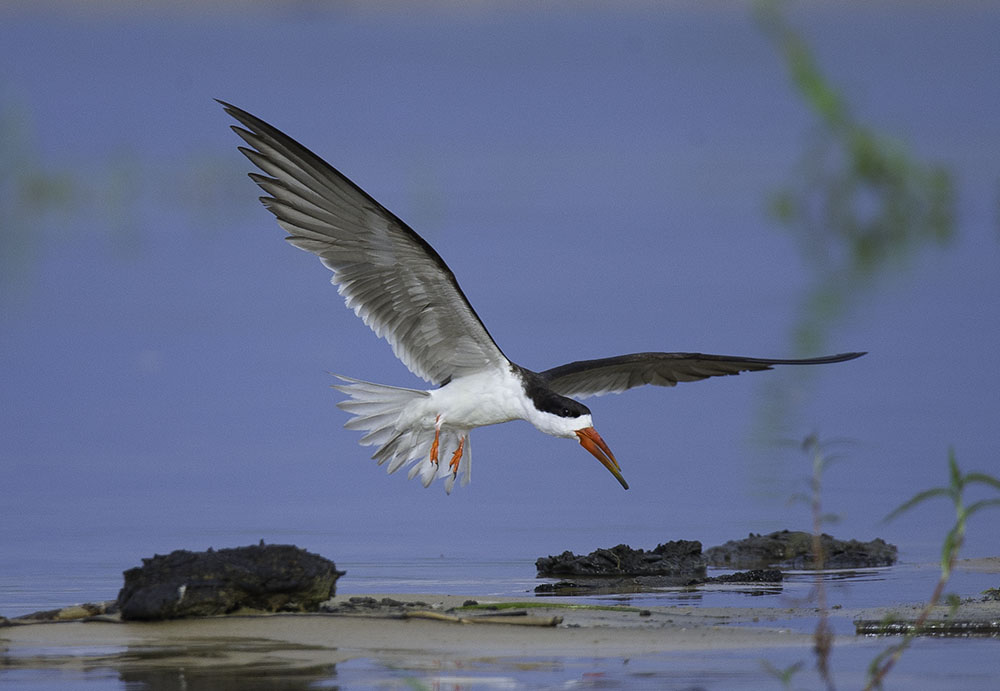
Rather like in Kruger, one big fish is enough to make one forget all about the long, tedious time spent waiting. After catching another 4Kg fish, we return to camp at 11am for brunch and a rest.
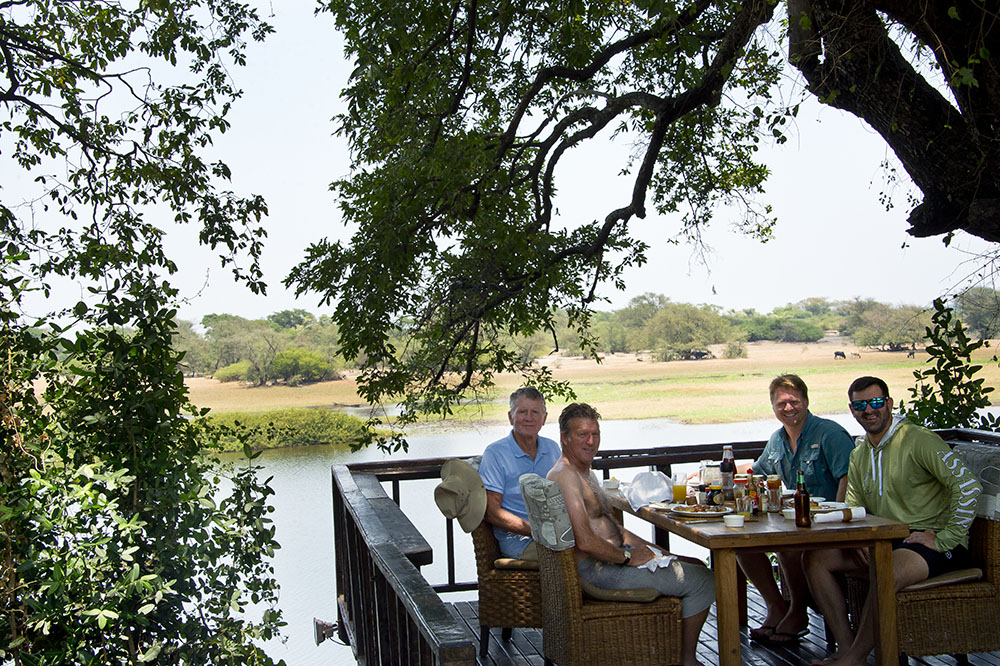
This afternoon we head upstream about 5kms and then drift back. The current takes us close to an undercut bank and here we find a small colony of nesting colourful Carmine Bee-eaters. Their breeding season is now so these holes in the bank will contain fledglings.
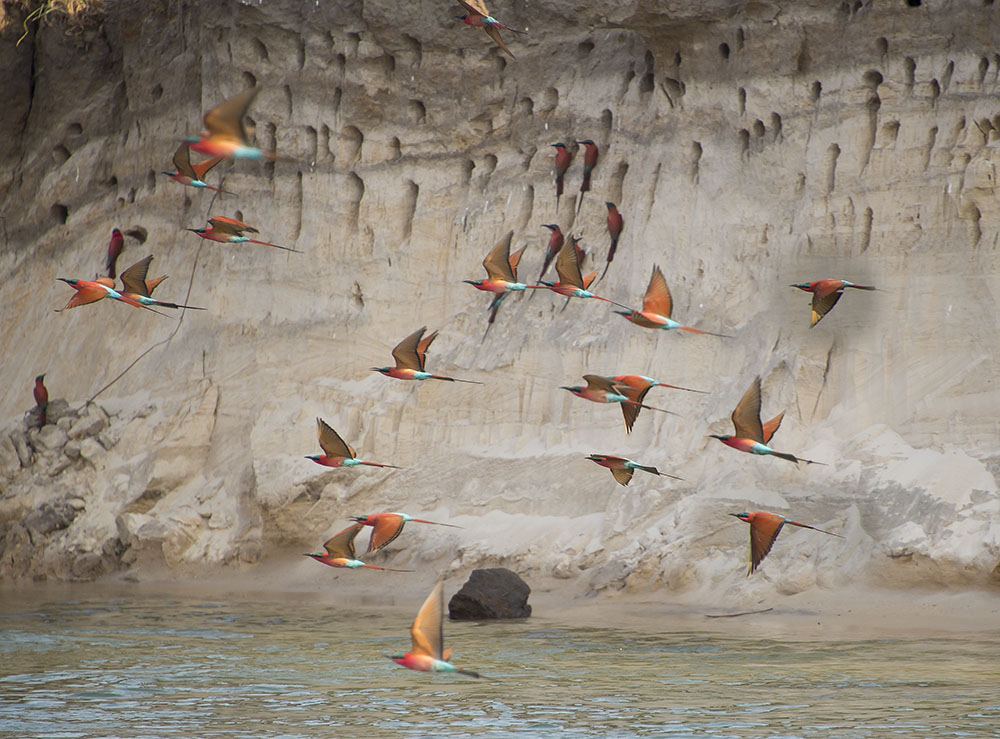
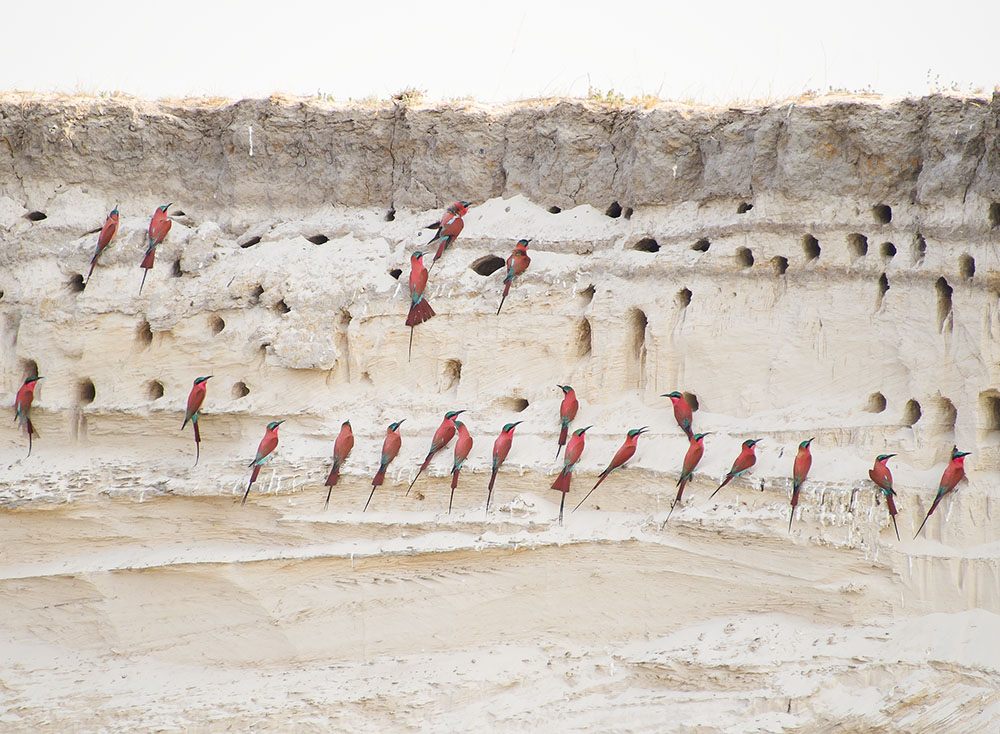
It is at about this time that Chris is dangling his foot off the boat into the water when a large nearby splash reminds us of the dangers lurking in these seemingly placid waters. Every so often we come across a pod of hippos which are used to the boats and hardly pay attention to us.
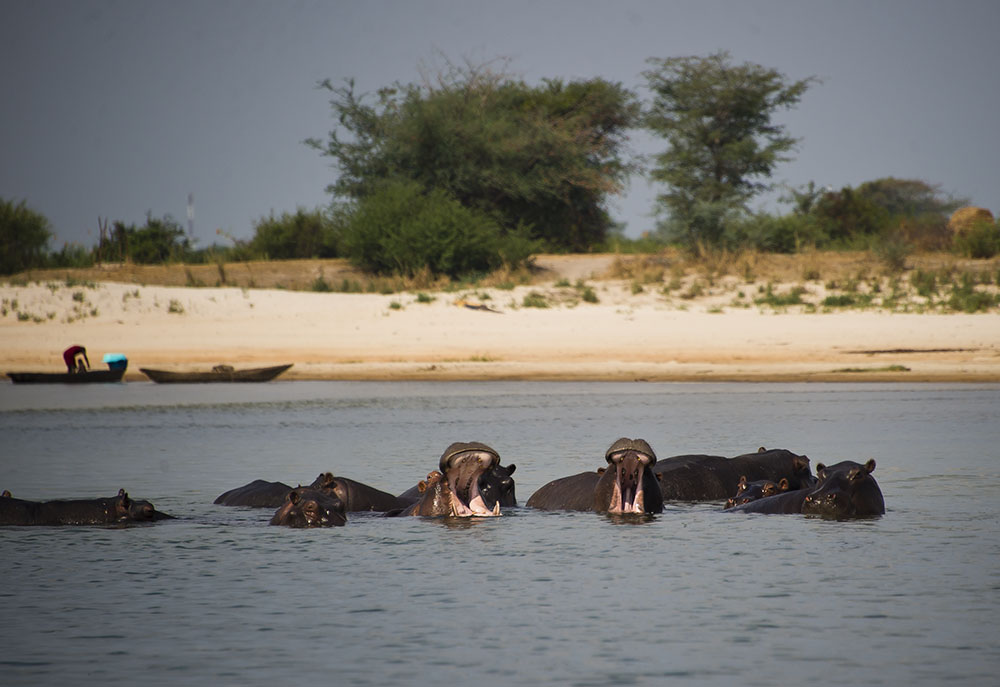
Remmy reminds us that it is the mother hippo and calf that poses the biggest danger and many of the locals have been attacked. Fishing has not been too good this afternoon but we are rewarded with a beautiful golden evening sunset.

Saturday, 28th We sleep under very good mosquito nets at night but in all the time that we are at Shackletons, I never hear or see a ‘mozzie’. Another surprise is that the supposed October heat is not at all apparent. Usually a breeze is blowing which keeps us comfortable.
This morning we drift down the river from the lodge but the tigerfish are just not biting. Instead we catch some barbel.
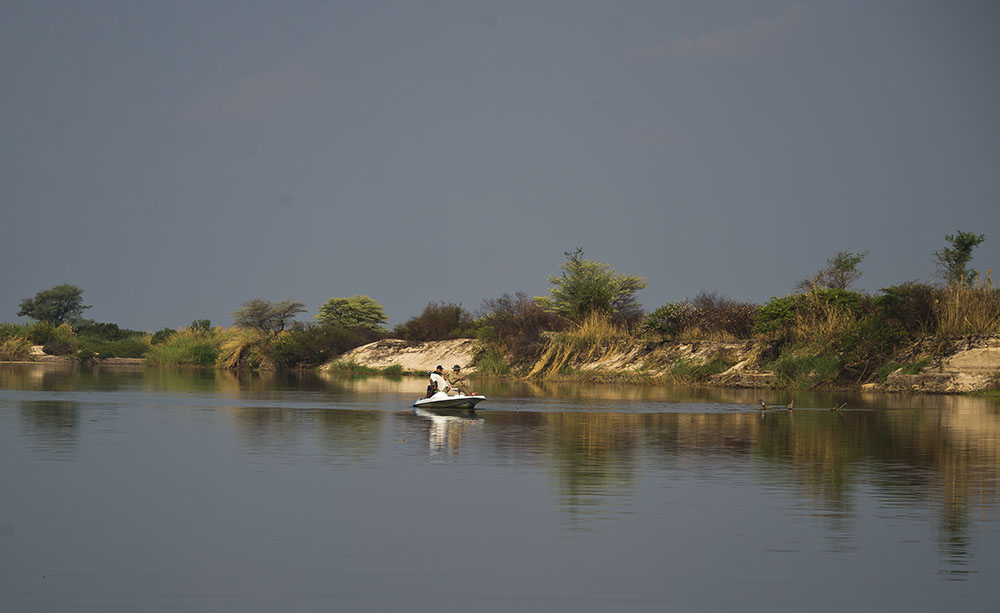
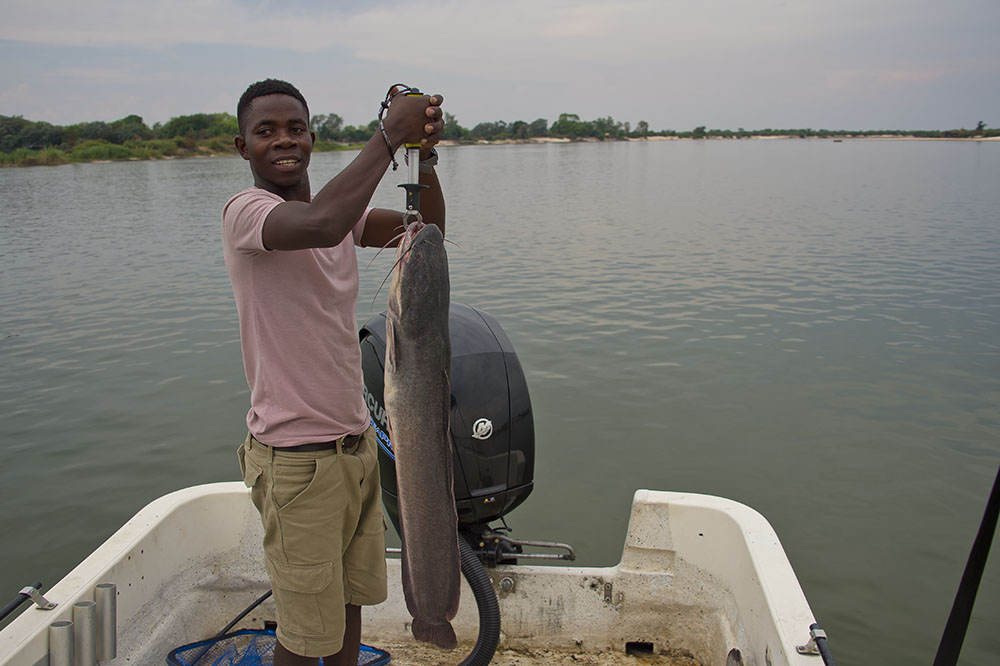
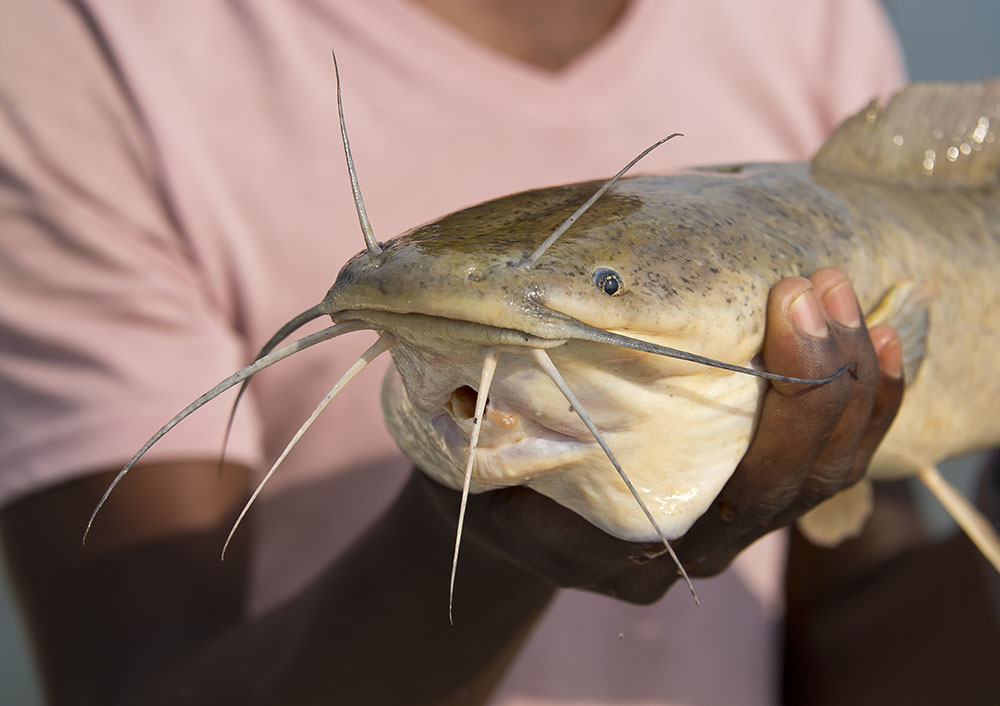
Another prized fish here is the Nemwe – a green coloured bream that can grow quite big. A dead but still fresh Nemwe comes floating down the river past us and Kelly scoops it out of the water.

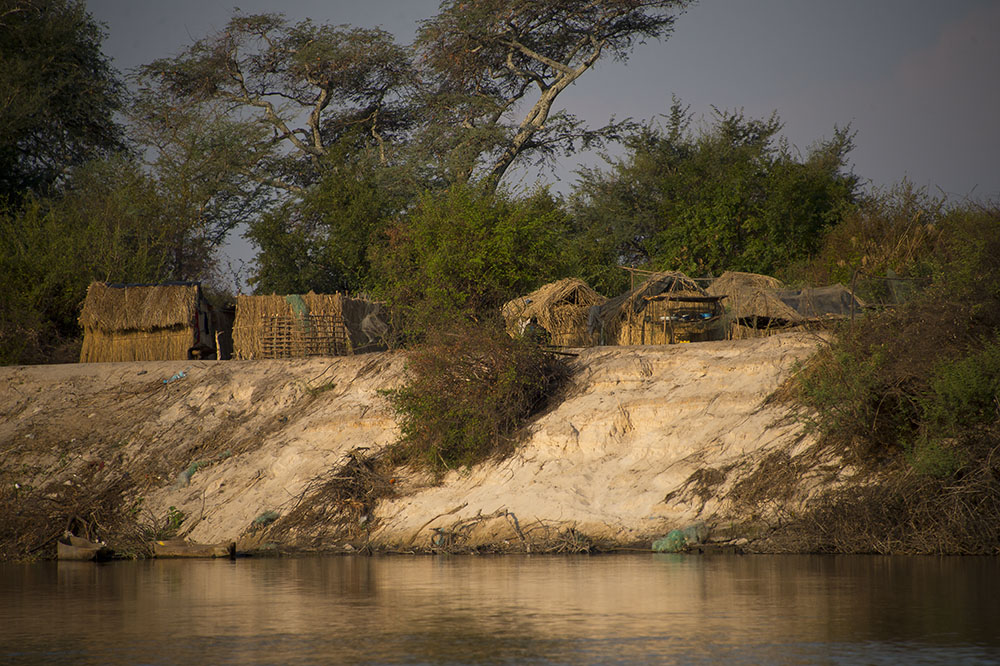
Before returning to camp, we present the barbel and nemwe to some locals.
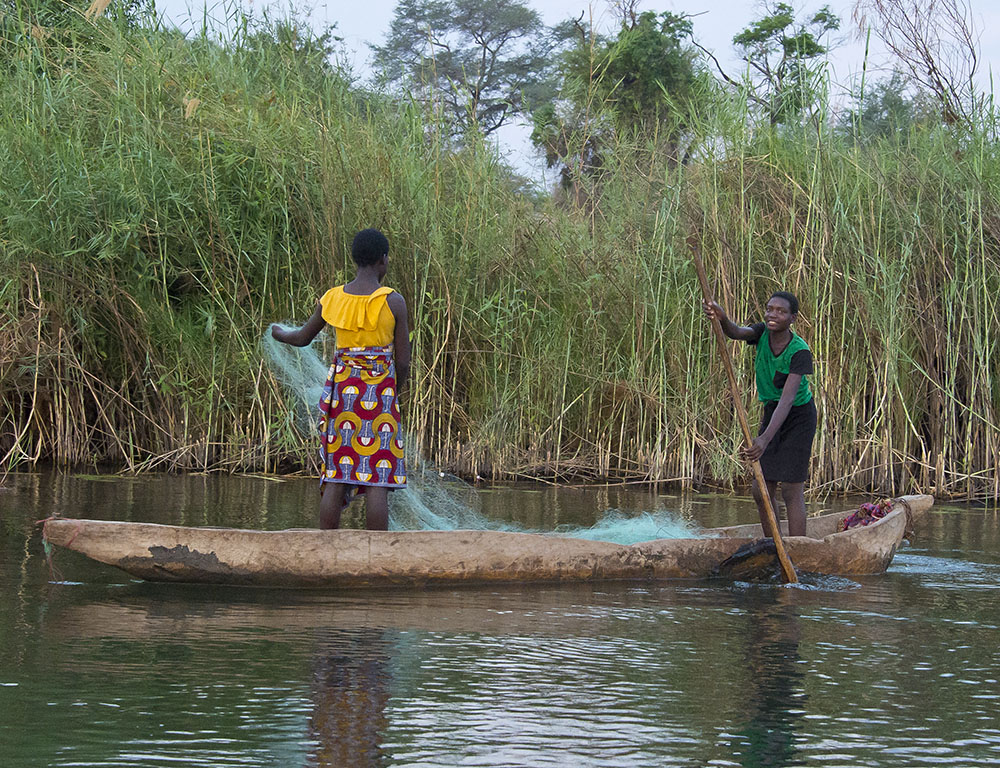
Back in camp we learn that Dwayne on the other boat has caught an 8kg tigerfish – downstream. Now that is quite a fish.
Tonight of course is the final of the Rugby World Cup and after supper we settle down to watch this enthralling match. Most fishermen are keen rugby fans and fortified by their usual B & C’s, a rowdy evening follows – with a very pleasing outcome.
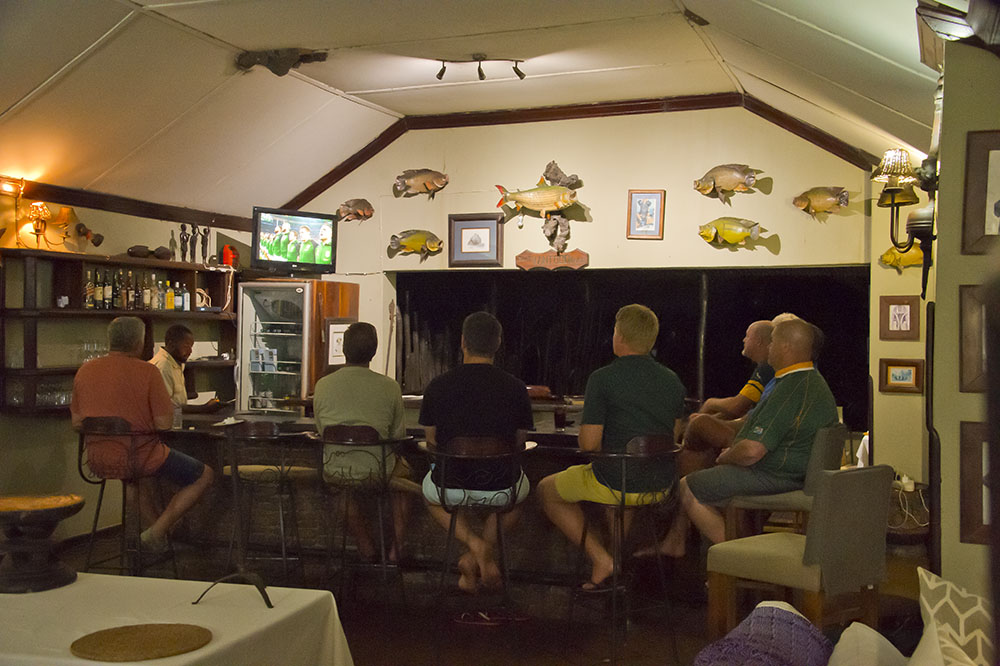
Sunday, 29th Encouraged by Dwayne’s success, we decide that on this, our last day, we must again go about 15km’s downstream beyond the Mwandi village. But despite our best efforts, the fish are frustratingly still not biting.
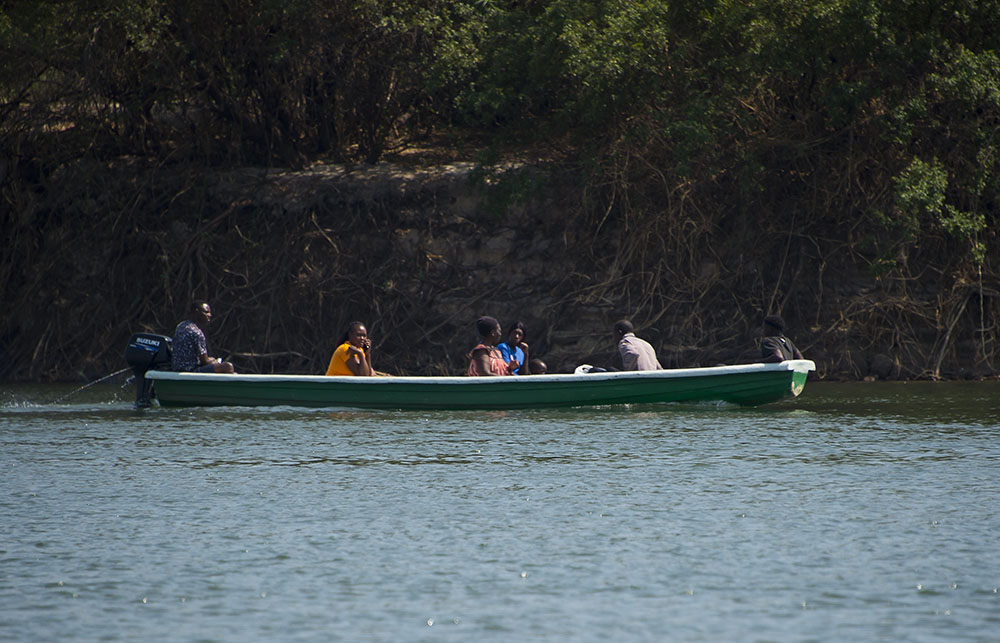
Poor Chris’s patience has been tested to the limit especially when, after a poor morning, we insist on going out again immediately after lunch and keep plugging away. Down to Mwandi we go and ……. quite inexplicably, our luck changes. In a deep, quiet pool we begin to have regular bites and runs from big tigerfish. I am thrilled to boat a whopping 8.6kg fish – by far my biggest tiger ever.
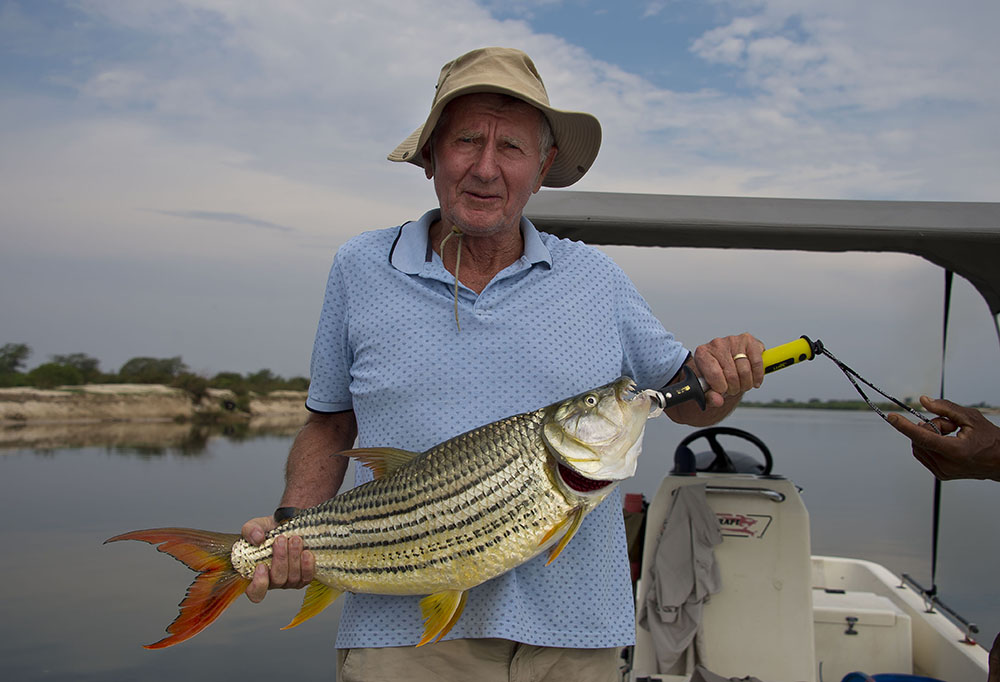
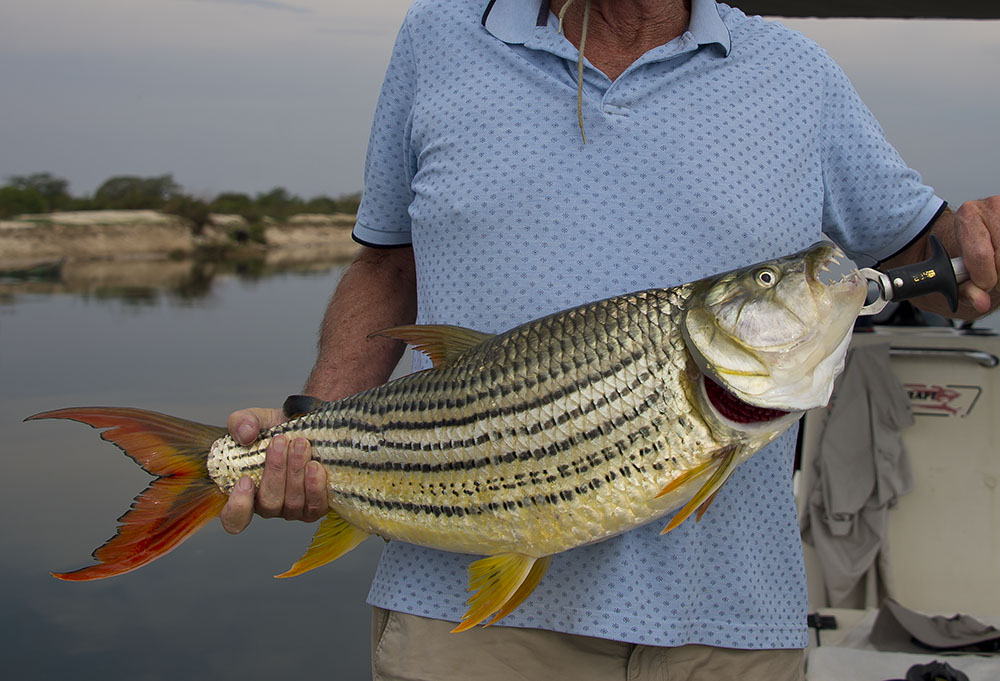
After enjoying some great fun, we eventually return to camp for the last time. For me the Zambezi is rather a spiritual experience. The vastness of this lazy river, the gentle interaction with the indigenous people and the palpable peace and simple happiness is so therapeutic. But I feel an uneasy undercurrent. Whereas places like the nearby Caprivi Strip conjure up images of a romantic wilderness, the reality is anything but. The surging population has driven out the wildlife completely, and the same is evident here in Zambia. Forced to survive, people eke out a living by chopping down trees to make charcoal, Chinese gill-nets strip the river of its smaller fish and the nets are even used to trap the Carmine Bee-eaters in order to sell their beautiful feathers. Whereas famine, disease and warfare once kept the population in check, that no longer applies and our wonderful natural heritage bears the brunt. The one saving grace of the Zambezi is the annual flood which spills out over the banks onto flood plain thus preventing its banks from becoming built up.
Monday, 30th During the night we are awakened by a great crack of thunder and a deluge of rain marking the beginning of the rainy season. Our four night visit to Shackletons has come and gone. Howard, the owner, really runs an excellent lodge with everything done so tastefully well. The quality of the boats, all with new 4-stroke Mercury motors is top class and full marks to Shackletons. With a limited fishing season and some high overheads, it is to be expected that these lodges are expensive – but not excessively so.
After our breakfast and goodbyes to all, we pile into our Toyota and begin the trip back to Livingstone.
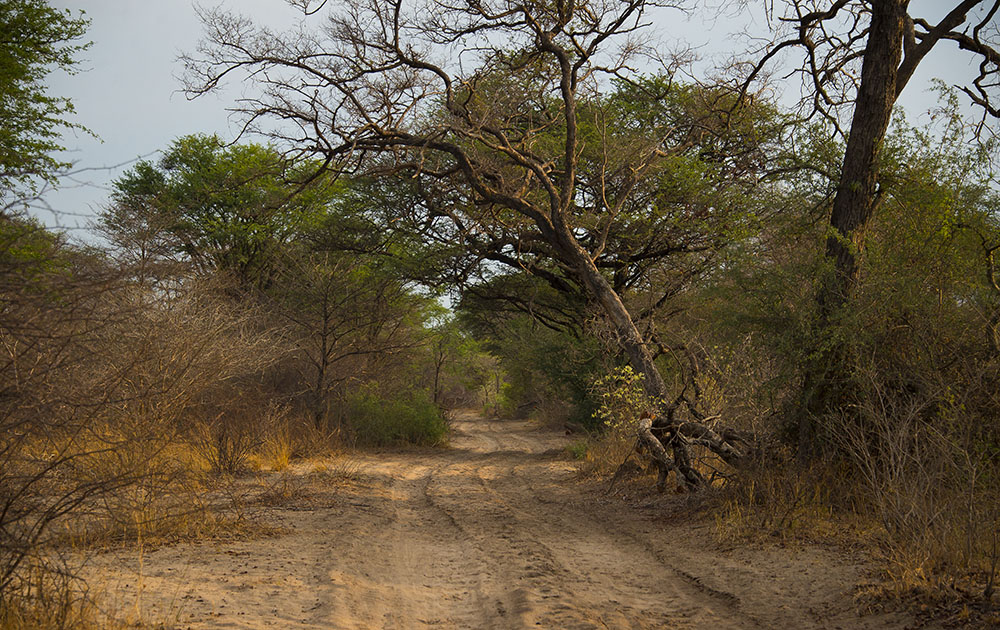
Back on the mainroad it becomes apparent that many locals are heading for Kazungula where the Zambezi is bridged over into Botswana. An assortment of items are on their way to market today.
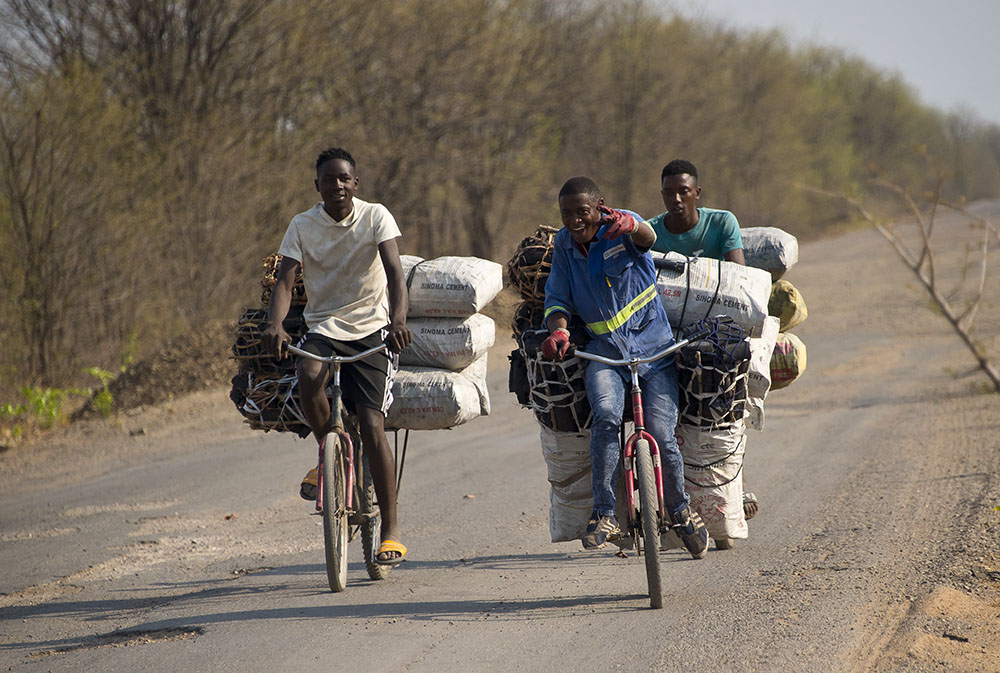

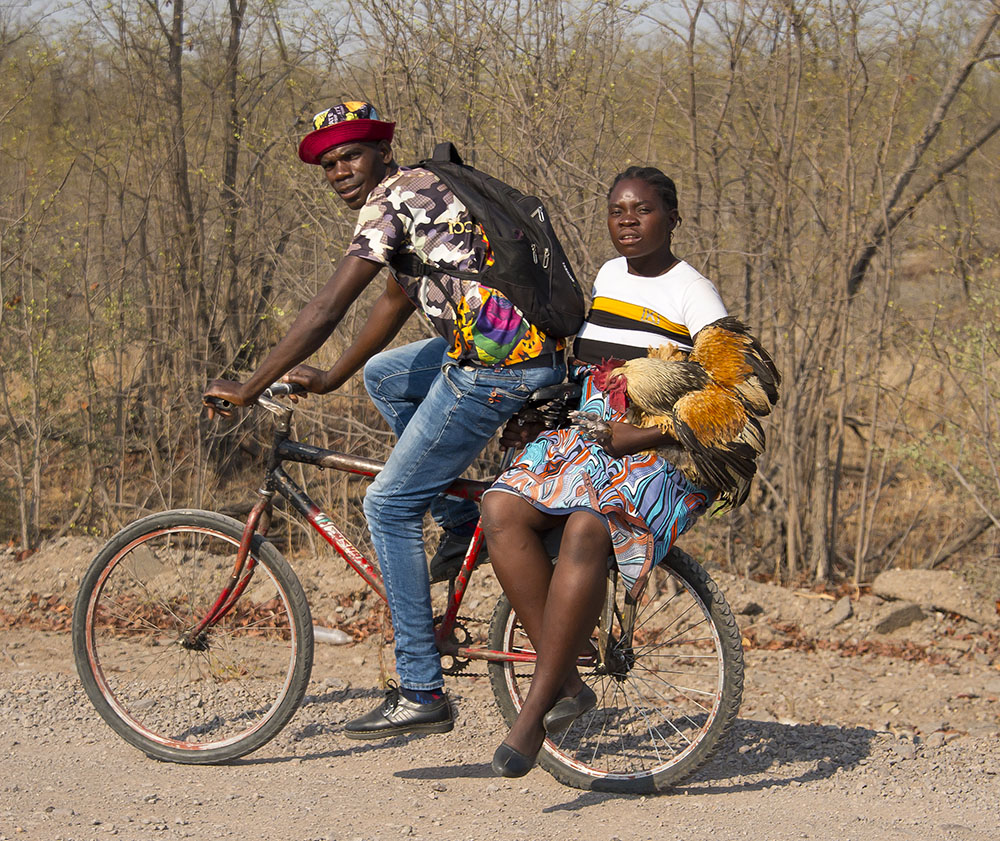
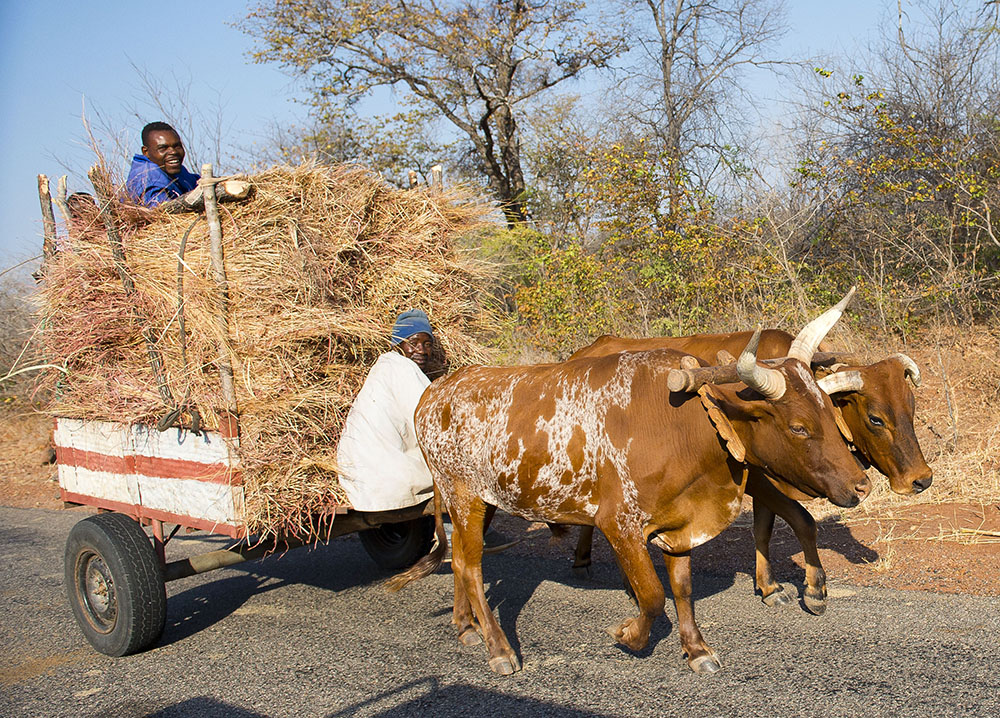
It is scenes such as this that makes Africa the unique place that it is and Zambia provides ample opportunity for a good chuckle. The population might be dirt poor but there is happiness in their simplicity – far removed from the crime ridden aggression in the ghettos of SA.
The young lads of our party have never seen Victoria Falls so we have given ourselves time for a leisurely visit before we must be at the airport. Unfortunately, at this time of year with the river low, the Zambian side of the Falls is almost dry whereas the Zim side still provides a spectacle.
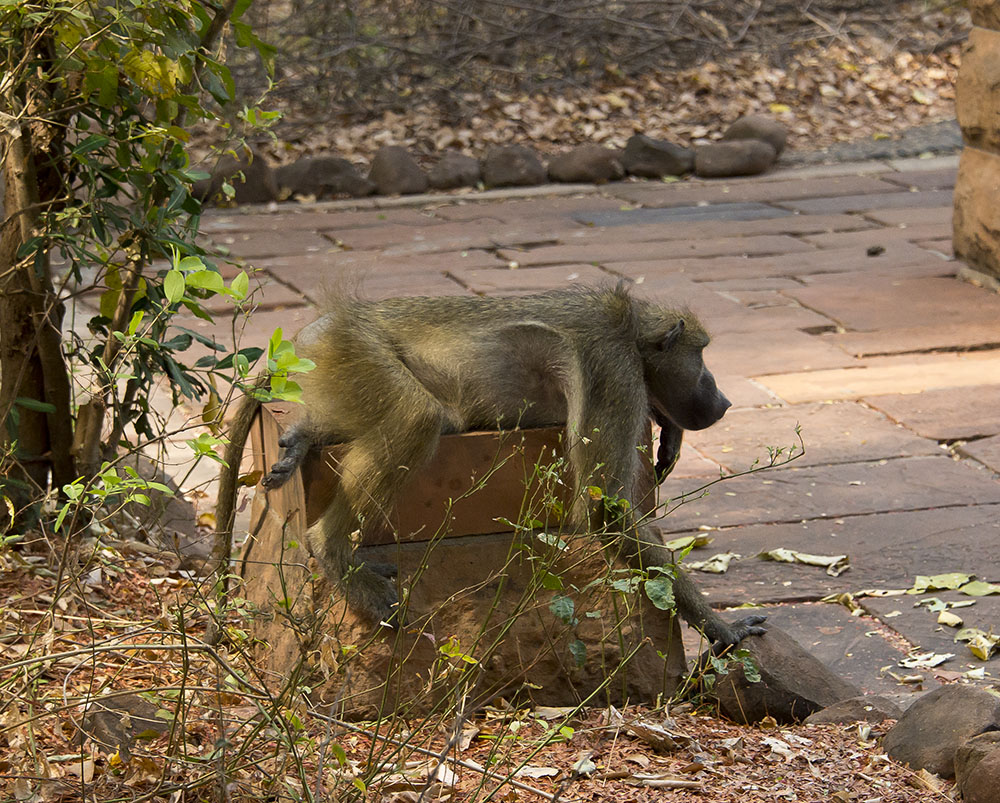
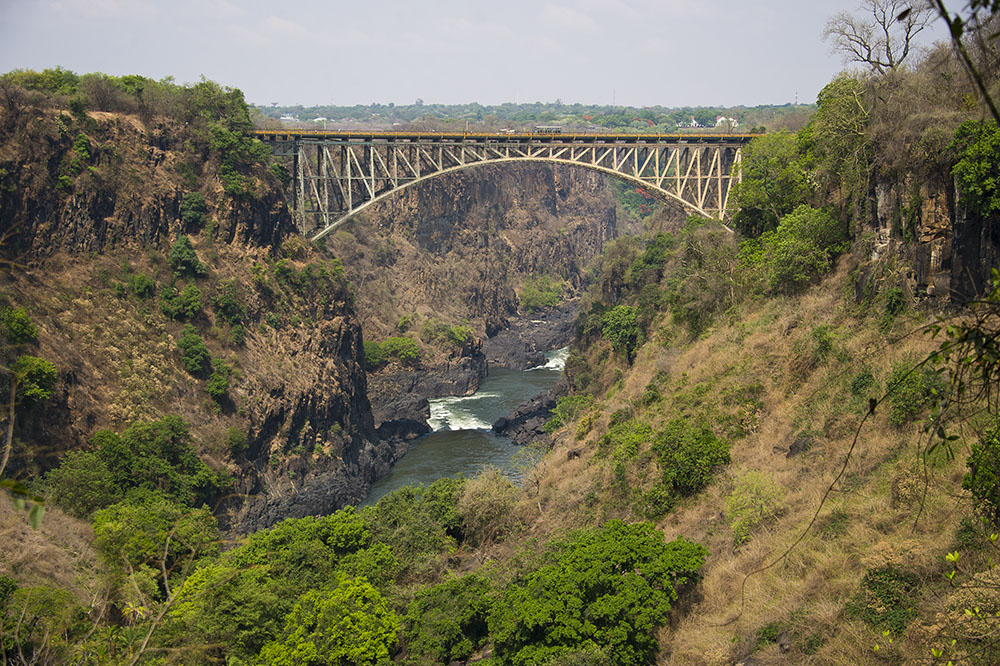
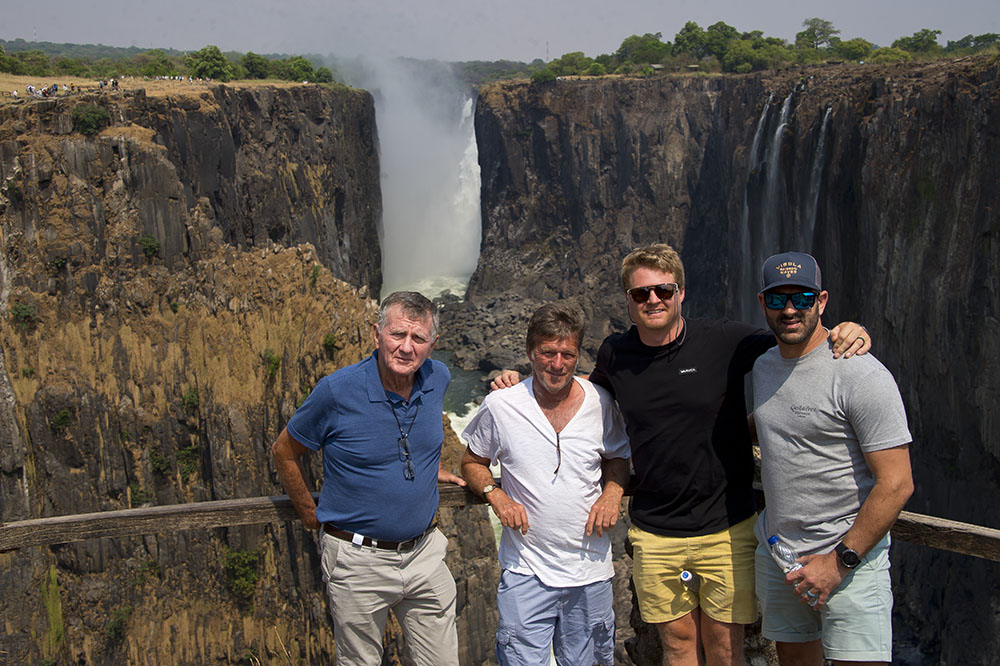
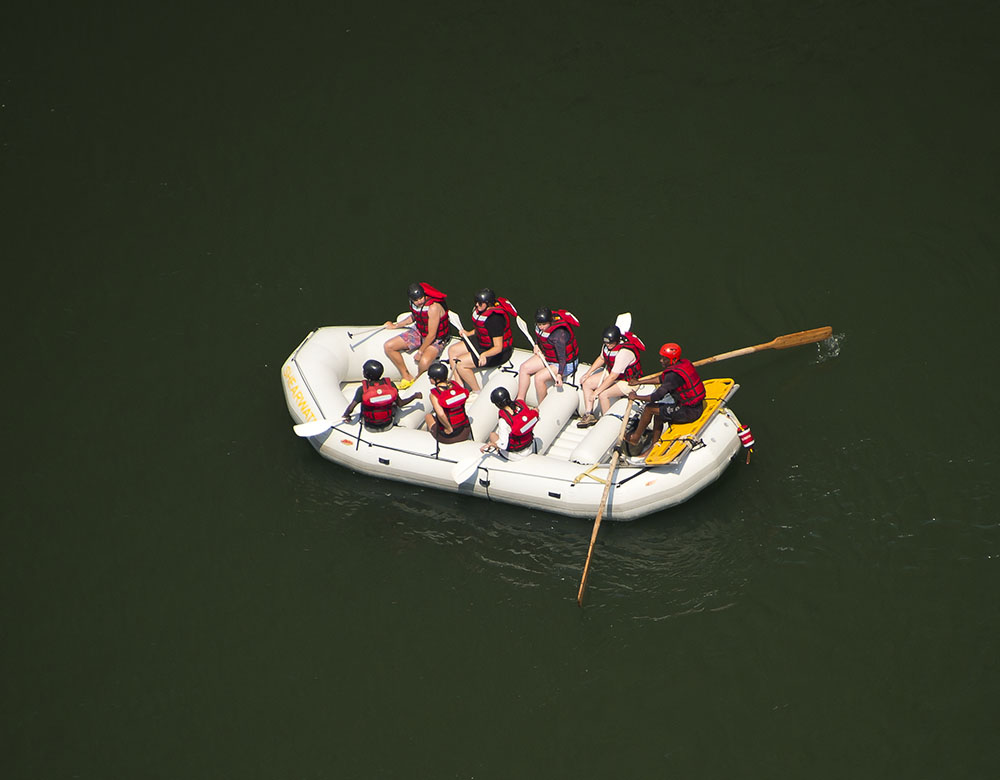
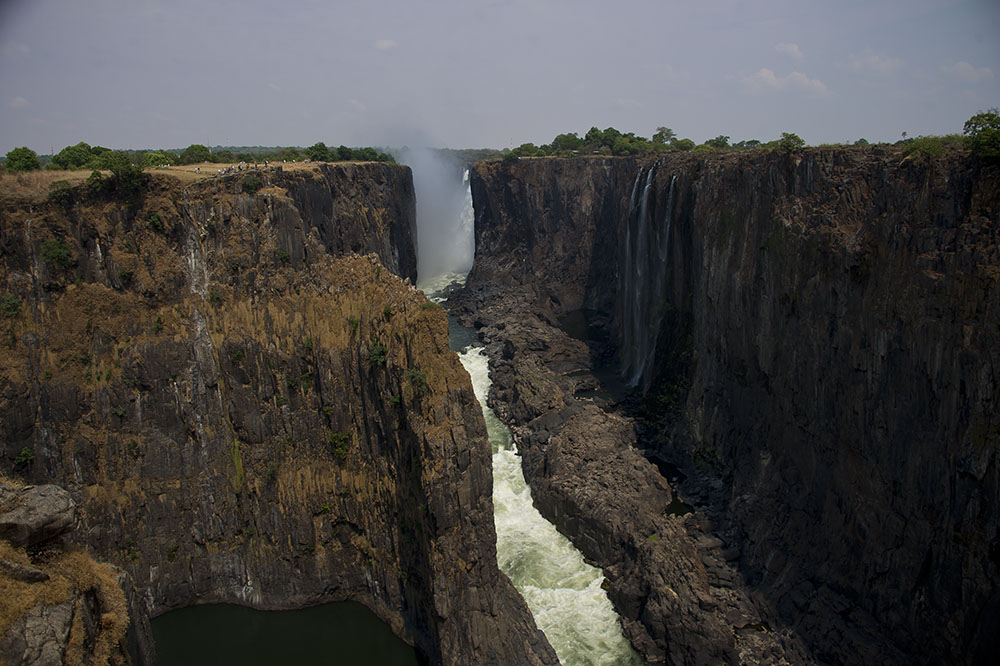
It is difficult to imagine that all of that mighty flow of water on which we have been fishing is channelled into such a narrow slit of water at the base of the Falls.
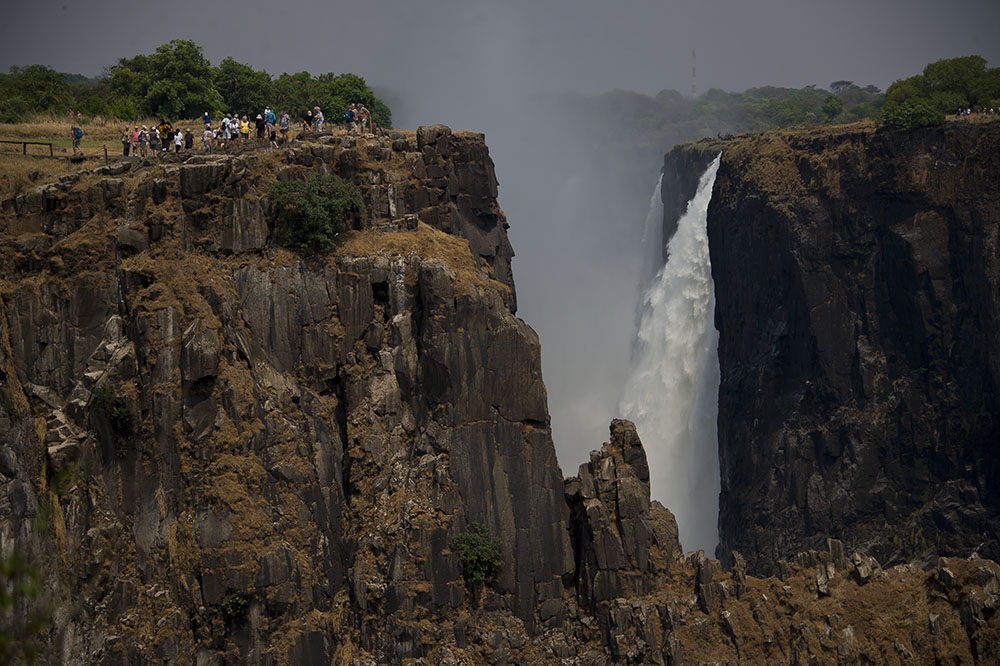
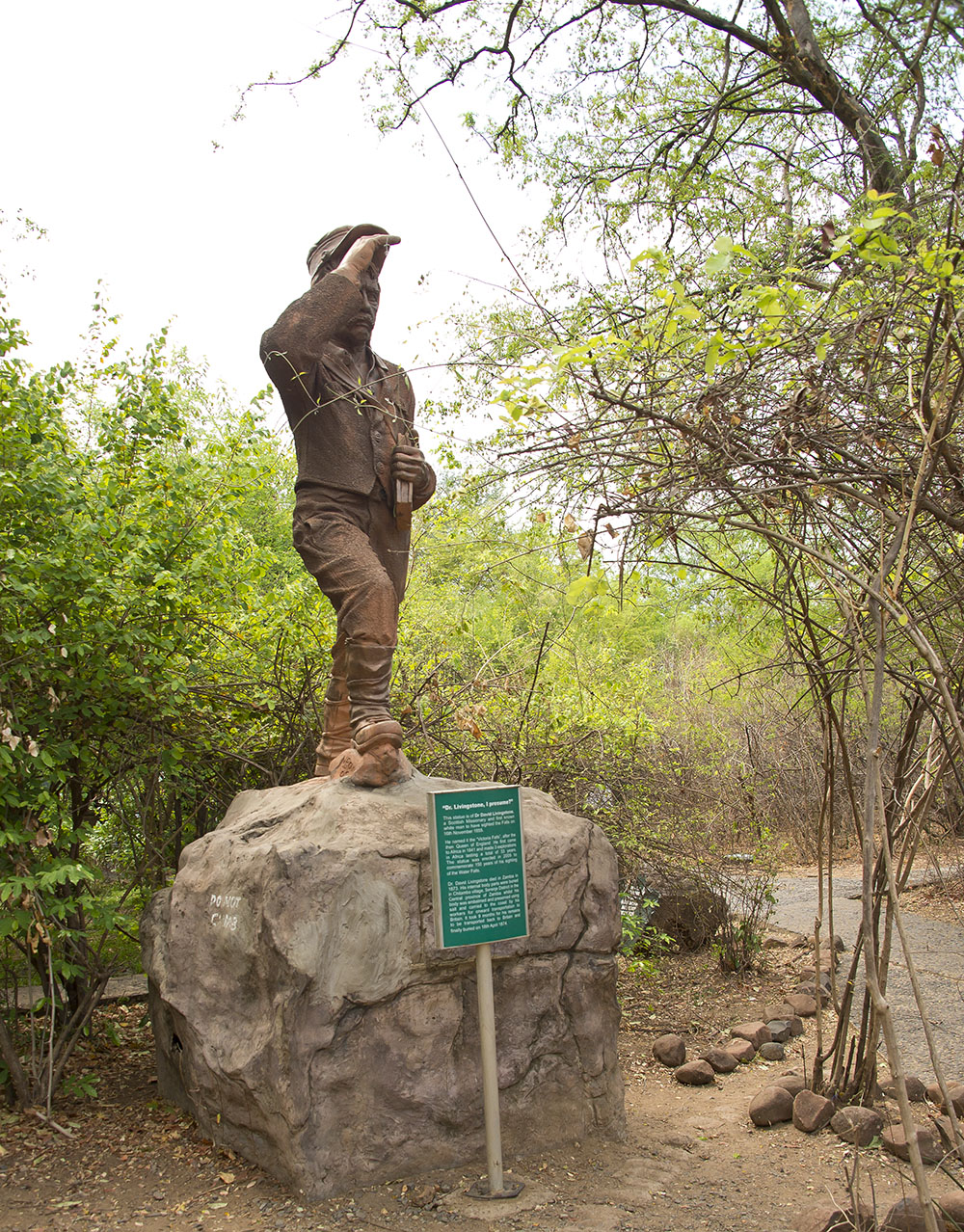
We return through Livingstone town to the airport. The main street of the town is neat and tidy but away from that, litter and squalor prevails. As a fitting finale, I photograph a large picture of Vic Falls on a wall in the airport. Truly one of the great wonders of the world.
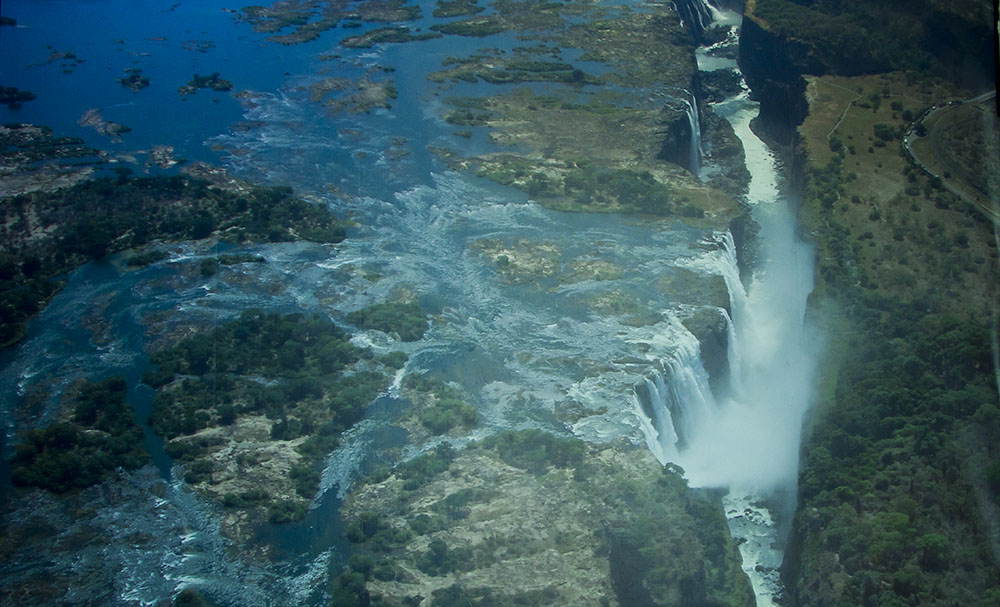


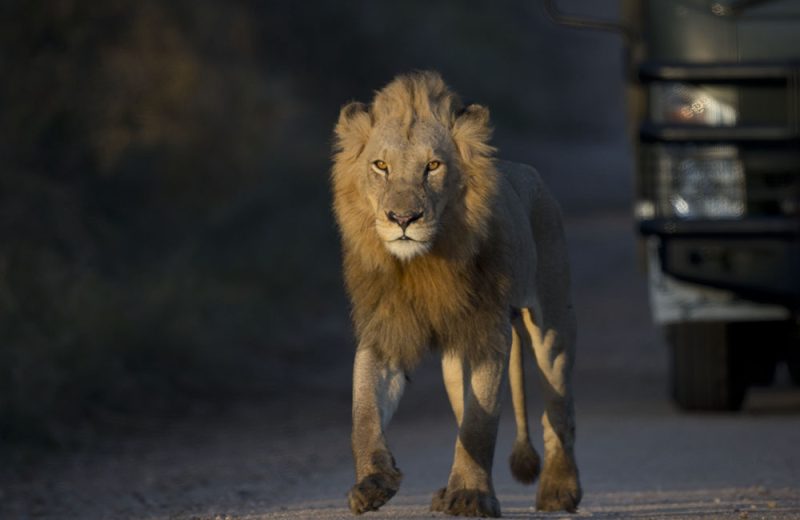
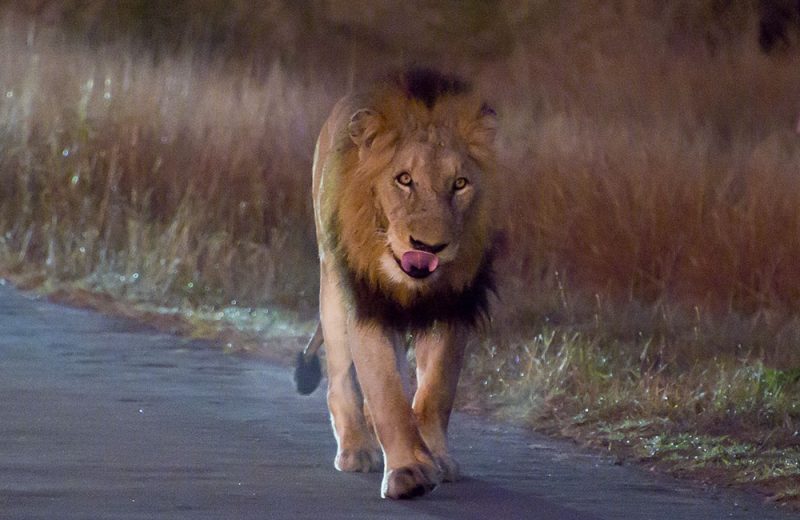
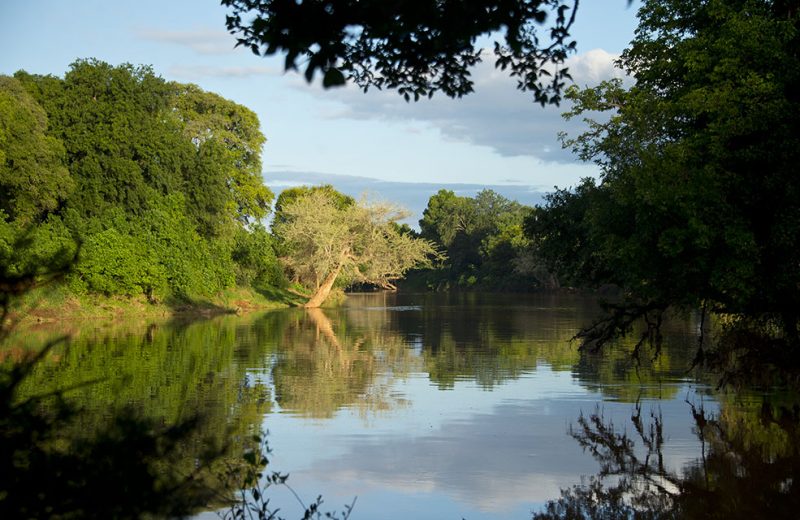
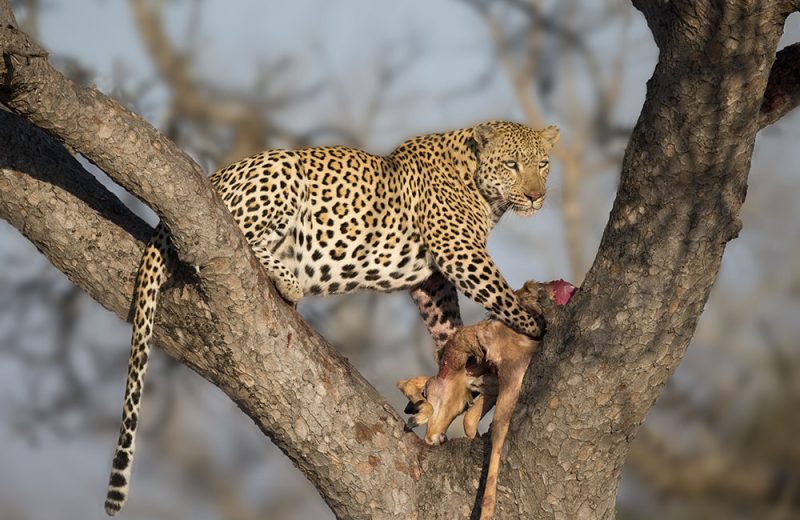
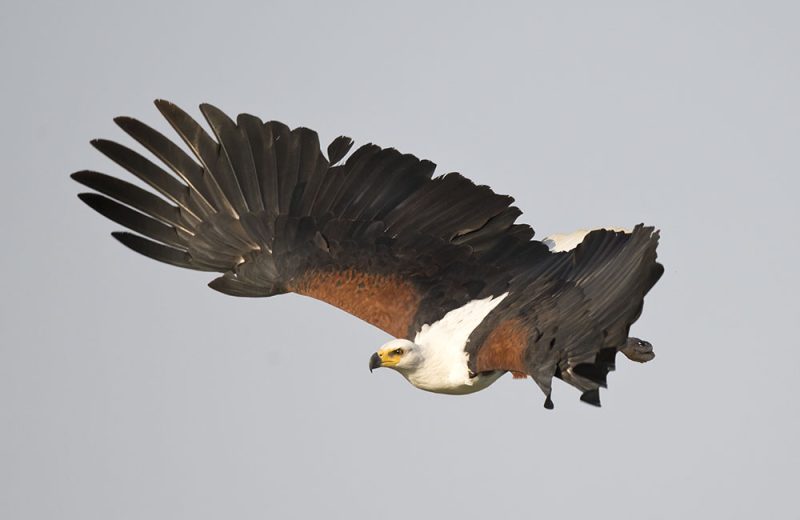
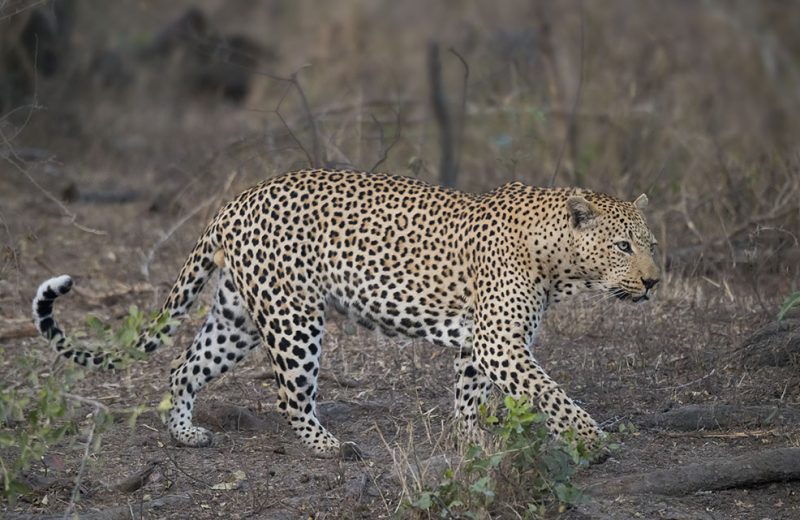
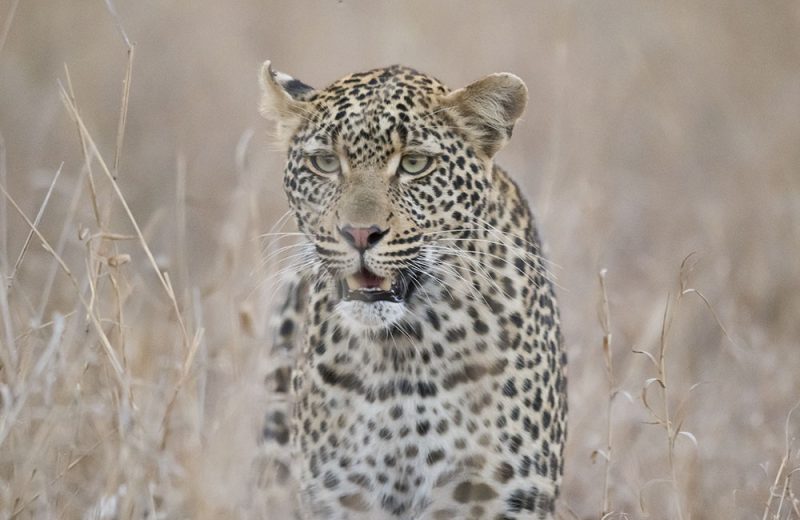

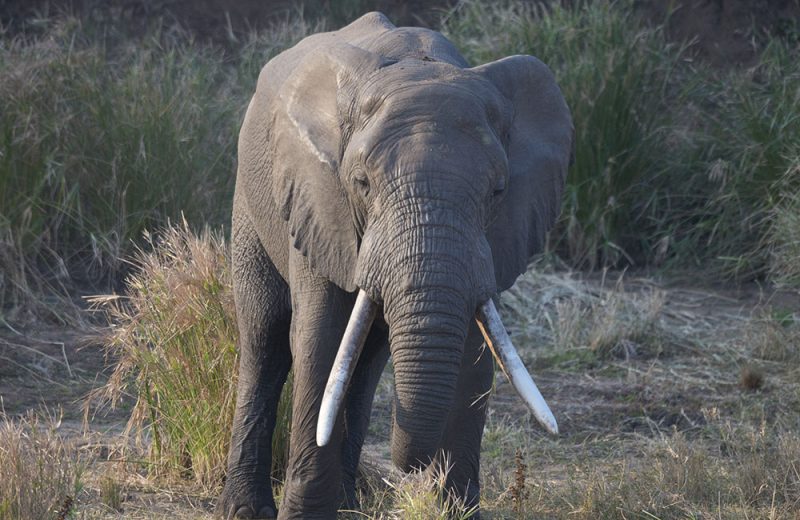
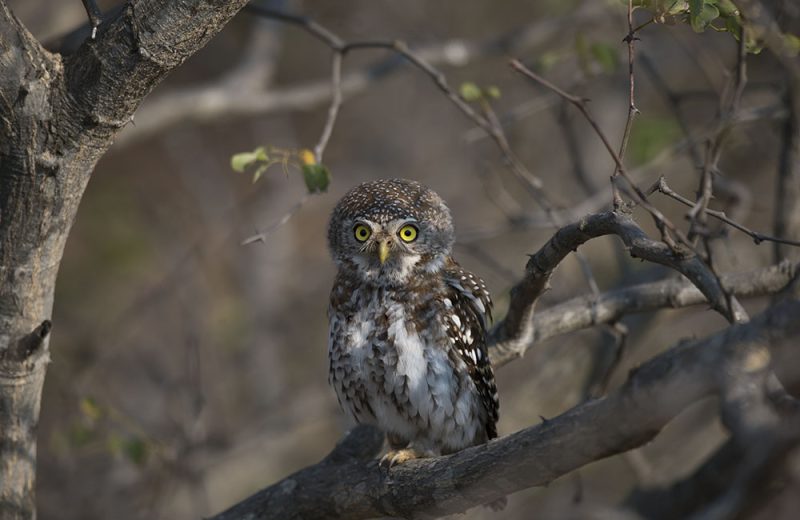
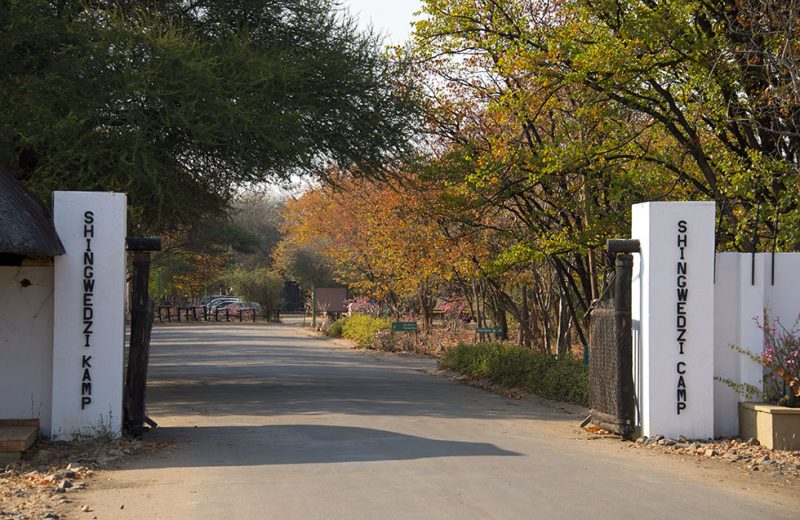
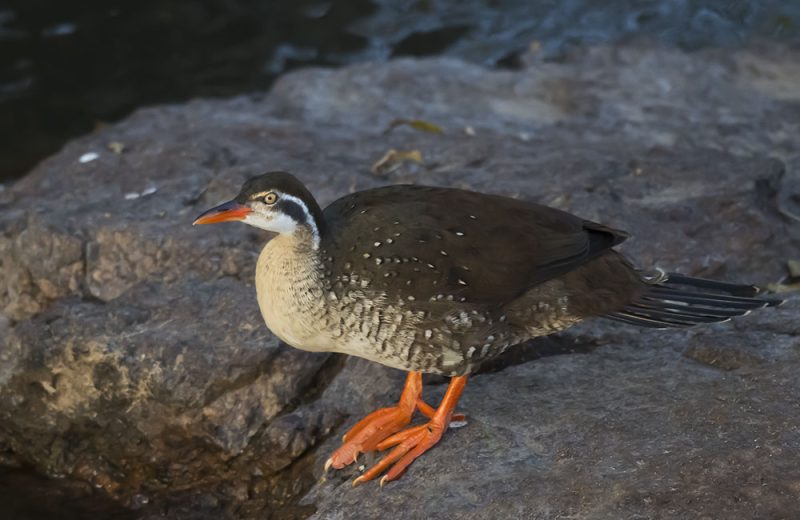
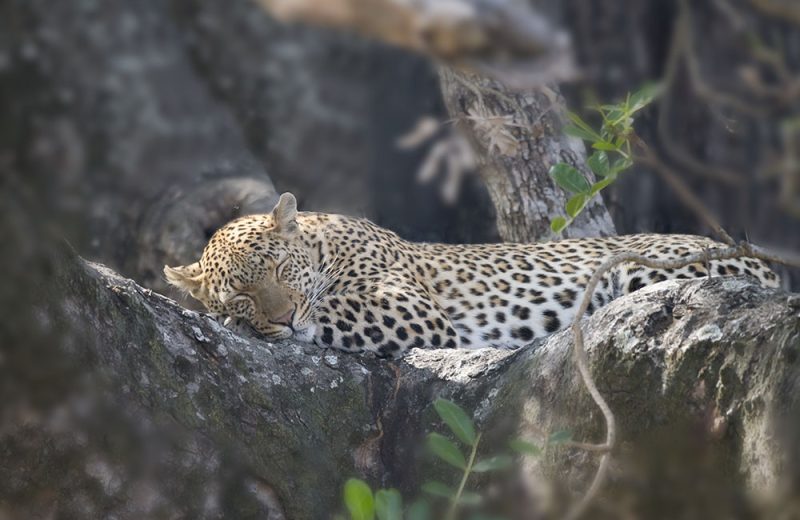
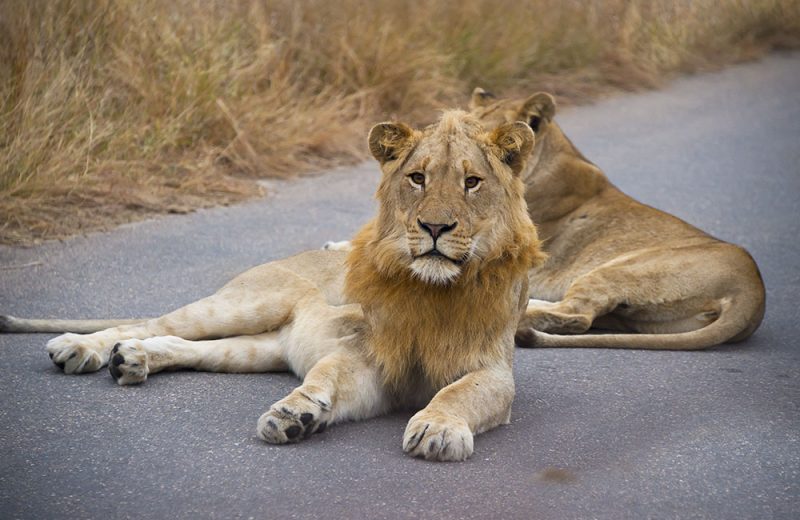
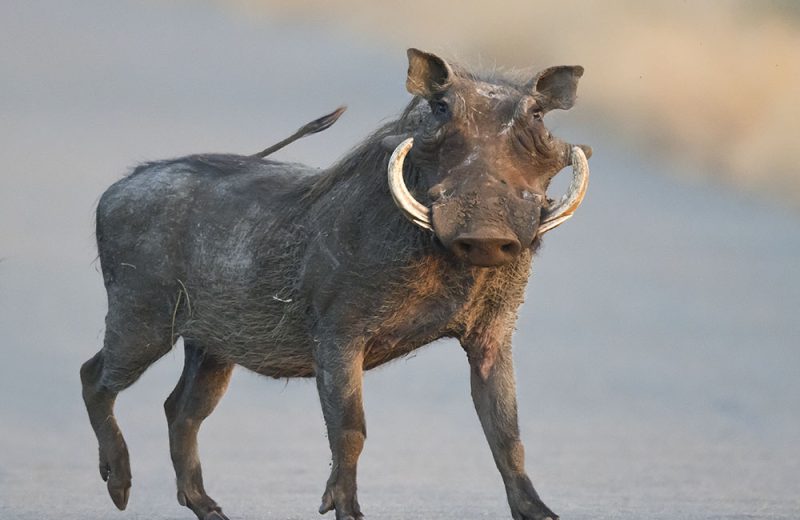
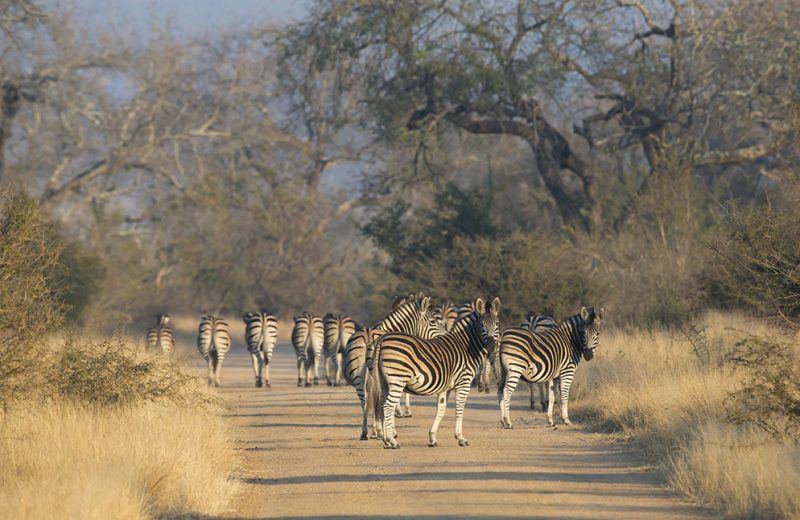

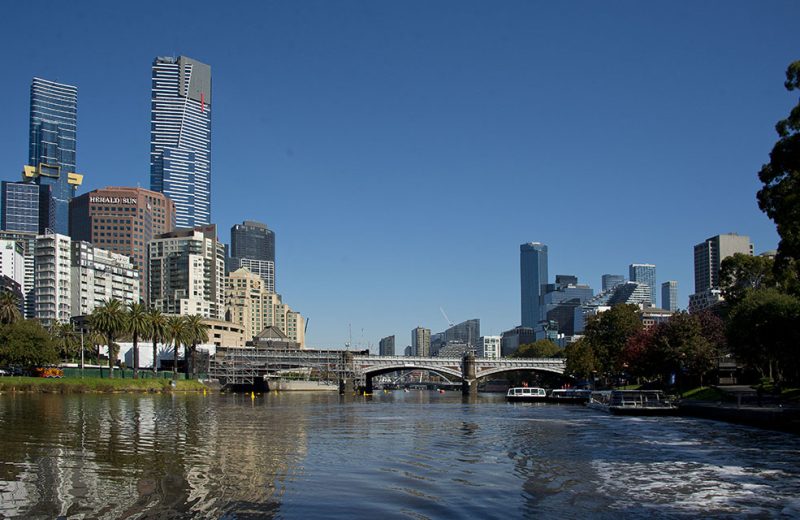
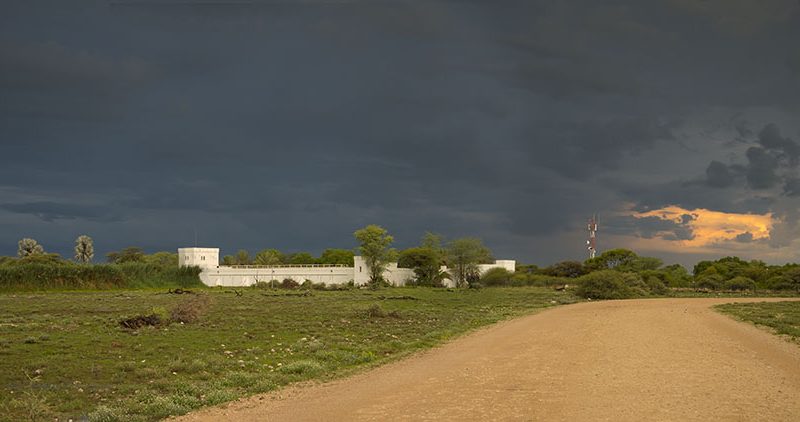
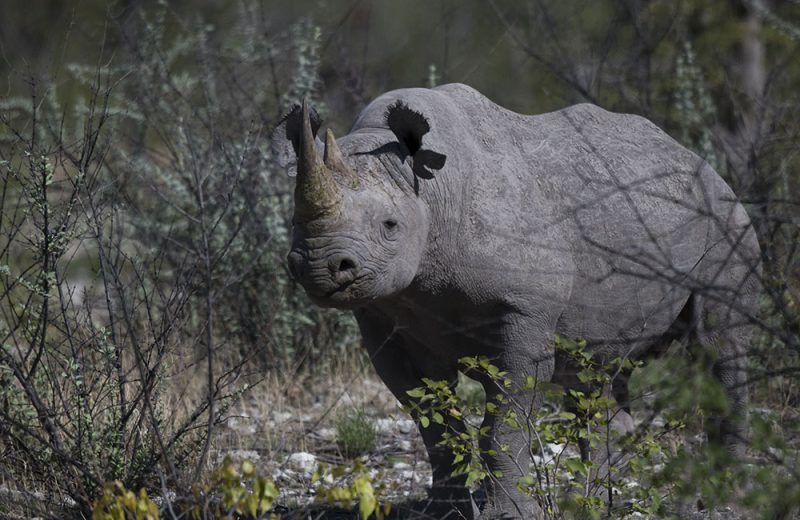
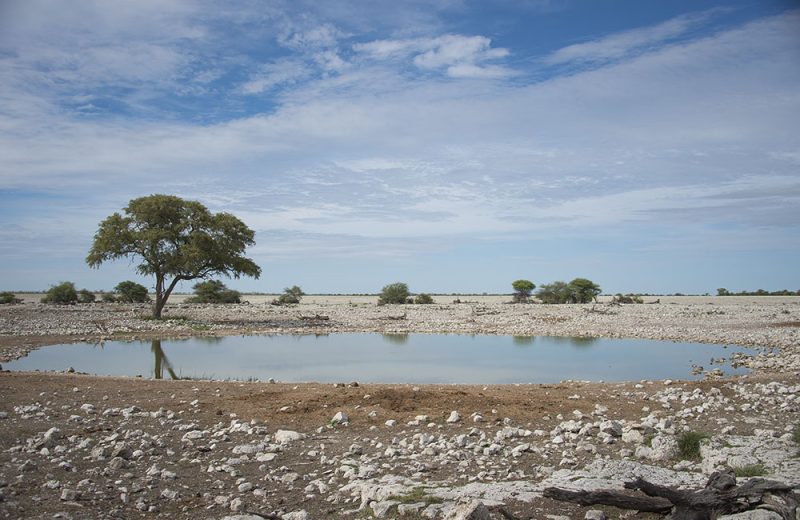
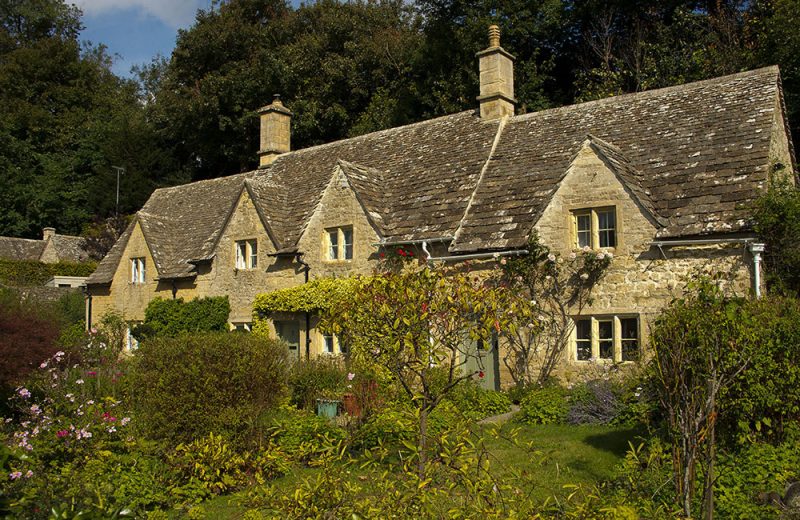
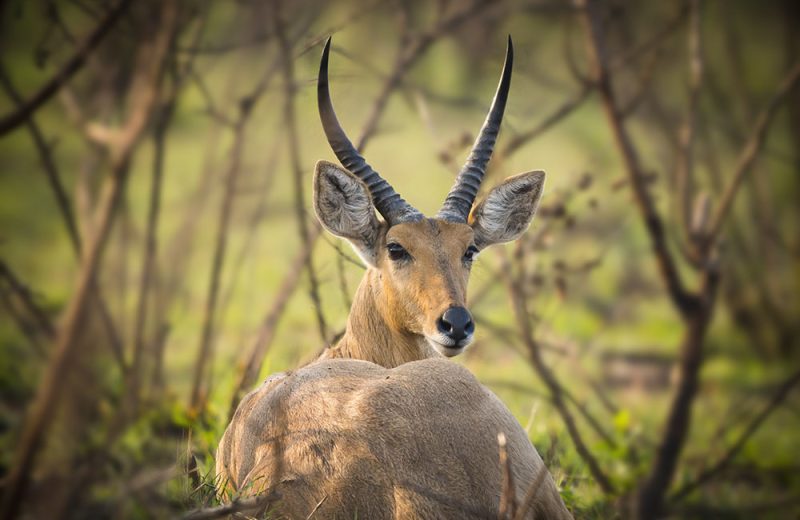
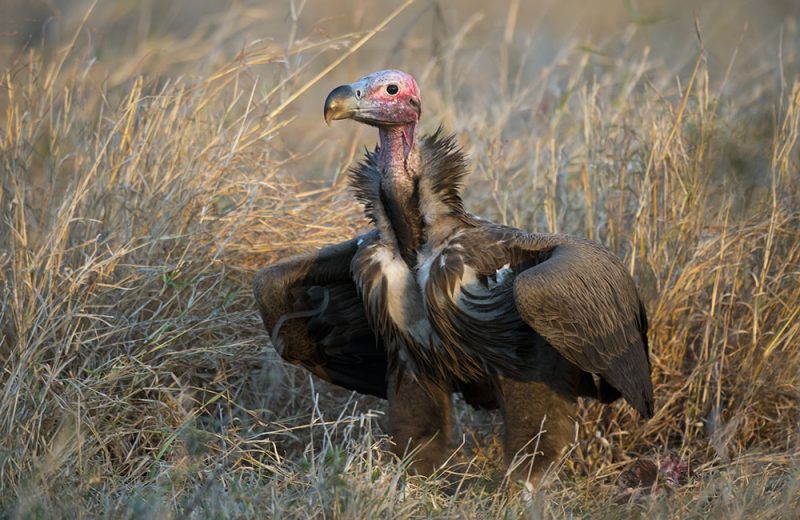
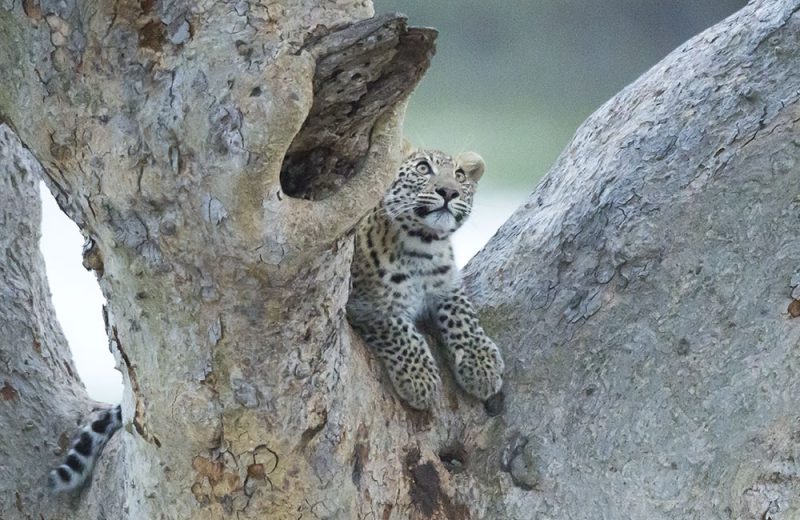
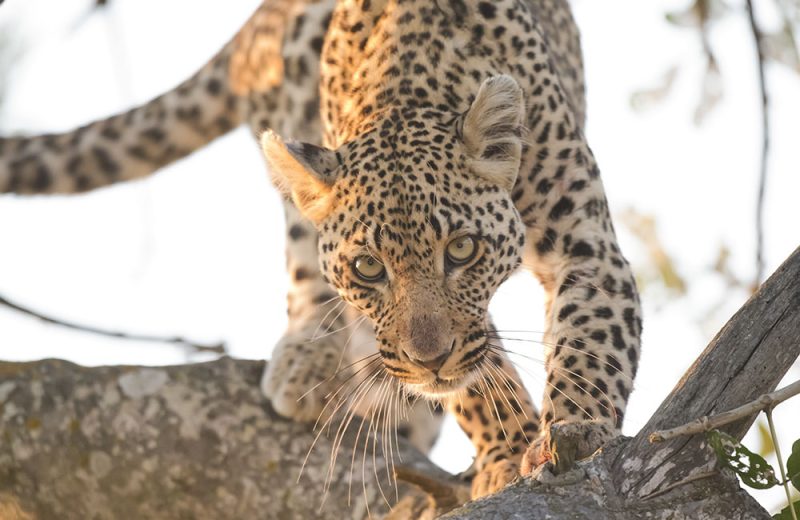
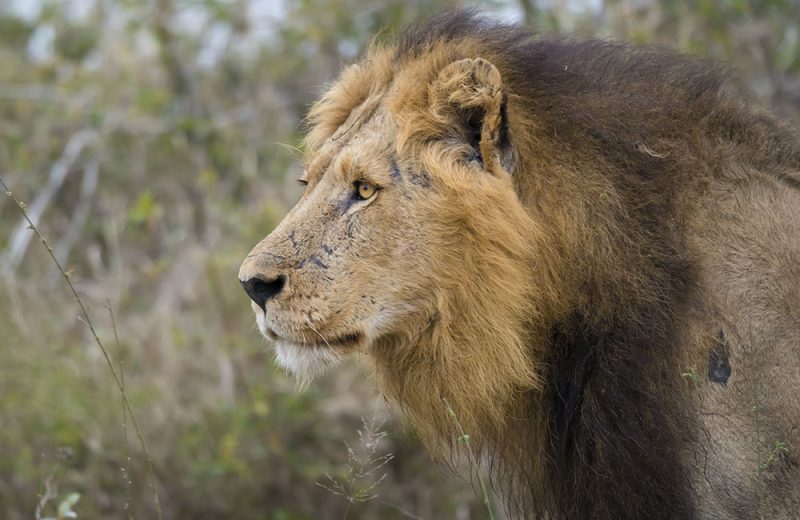
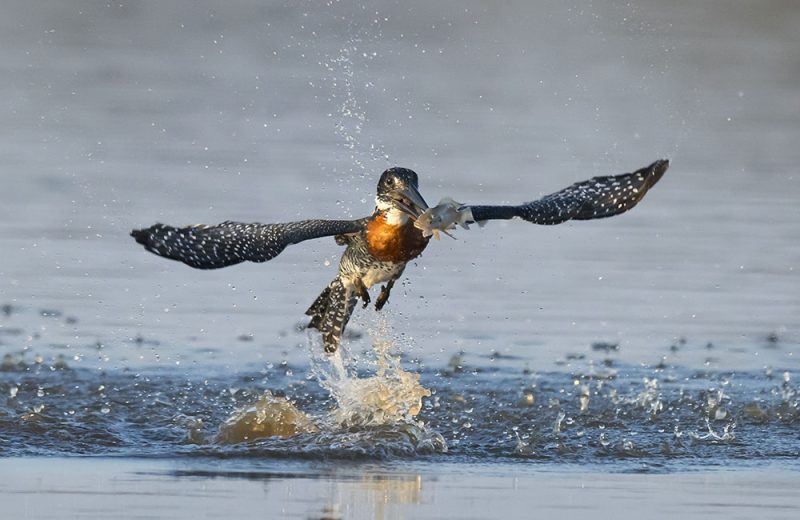
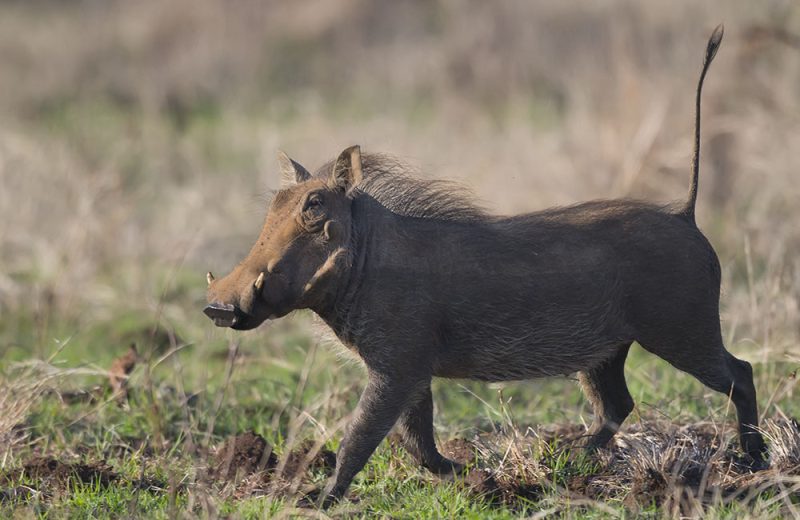
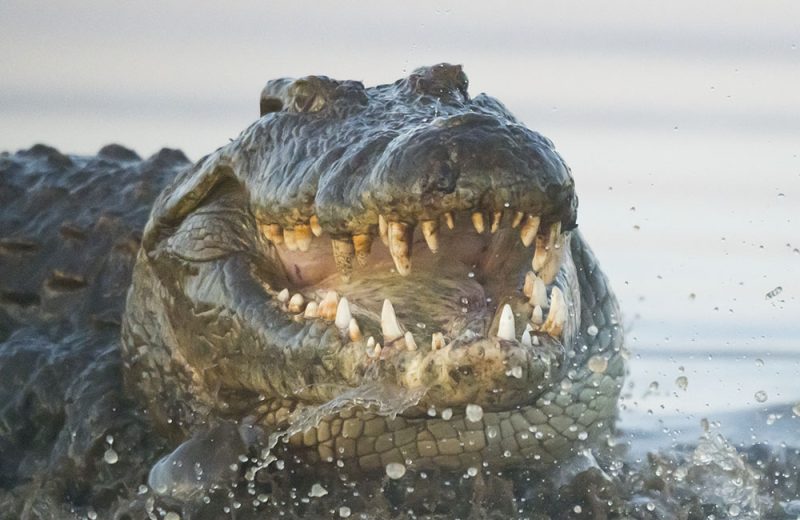
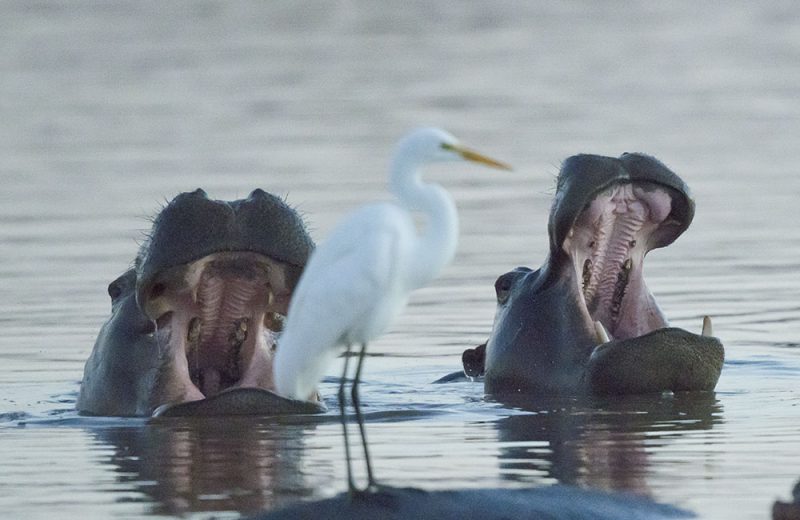
16 Comments
Jenny Cooper November 1, 2023 at 2:52 am
Many thanks for sharing your tiger fishing trip with me, brought back many memories of our trips to Kariba
Richard GRANT November 1, 2023 at 7:18 am
Thanks Jenny, so, so enjoyable
Don Barclay November 1, 2023 at 4:40 am
Richard, you always paint an interesting story with descriptive text along with the usual quality pics. Many thanks
Richard Grant November 1, 2023 at 7:41 am
Fascinating trip Don and so enjoyable.
Joanne Denny November 1, 2023 at 2:42 pm
Thoroughly enjoyed reading about your fishing trip on the Zambezi. What a great opportunity to relax and enjoy time with friends in a laid back setting . Plus you had the excitement of catching the much admired tiger fish. X
Richard Grant November 1, 2023 at 3:34 pm
We had a wonderful time thank you Joanne
Helena November 1, 2023 at 3:08 pm
I just loved your photos, particularly the Carmine Bee-eaters and the stories that accompanied your photos. Wonderful to share this photographic journey with you. Many thanks Fred.
Richard Grant November 1, 2023 at 3:33 pm
A lovely trip Helena. So enjoyed it.
Dave McGaw November 1, 2023 at 5:43 pm
Such a wonderful set of pics, looks like you had a great time. Many thanks Fred
Richard Grant November 2, 2023 at 4:03 pm
Hi Dave, hope you are keeping well and hope to see you in Kruger soon.
Sarah Lord November 2, 2023 at 2:22 pm
An awesome few days on the Zambezi River.Great photos and explanations, made excellent reading.
Richard Grant November 2, 2023 at 4:04 pm
So enjoyed it Sarah.
Barbara Leslie November 2, 2023 at 2:55 pm
Wow, Fred! What a stunning trip. As I was reading, I thought of Pete. He would’ve loved to hear about your trip. Hope you are keeping well.
Richard Grant November 2, 2023 at 4:05 pm
Good to hear from you Barbara. Yes, lovely trip.
David hoatson November 11, 2023 at 10:05 am
Very well written and glad you had an enjoyable time. How I miss Zambia what a beautiful country and happy people.
Very nice tiger aswell must have given a lovely fight. Regards David
Richard Grant November 13, 2023 at 7:13 pm
Yes, we had great fun Dave.